Hello guys. Hope you all continue to stay safe from the worst ever pandemic the world has witnessed. I know the relevance of the question is reducing day by day but still at places I go I do see people wearing masks when the places are safe and secure for the visitors. I know everyday I’ll start with the same phrase and this will continue until the name Covid-19 entirely becomes history in everyone’s mind. Even when things become history, media will find ways to bring it up. Today, I’m not talking much about it as I want to switch focus entirely to other things. The dream project of the Indian Railways, the Kashmir Valley Railway is nearing its completion. The construction is progressing on both ends of the proposed railway link and we can dream of covering the Kashmir Valley by train in another year or two. Jammu was the northern terminus of the Indian Railways for a long period of time. The railway station in Jammu is named Jammu Tawi considering the fact that the city is located on the banks of the Tawi river. There was an extension made from Jammu Tawi to Bajalta but none of the trains which terminated at Jammu Tawi were extended to Bajalta considering the lack of infrastructure in the railway station and foreseeing further extension in the coming years. The Himsagar Express running between Jammu Tawi and Kanniyakumari was once the longest running train in the country, connecting the northern and southern termini of the Indian Railways. Kanniyakumari will remain the southern terminus of the Indian Railways for years to come as we all know that it is impossible to extend the railway line from here. Till which place can an extension be made from Kanniyakumari? Maybe till Vattakottai Fort which is located few kilometers from the town. How about laying a track across the confluence of the Arabian Sea, Bay of Bengal and Indian Ocean and connecting the Vivekananda Rock Memorial by rail with rest of the country? Lol. Let us come back to Kashmir instead of focusing on Kanniyakumari as we still got a lot of time to talk about Kanniyakumari on our blog. The extension was made from Bajalta to Udhampur in 2005 but all the major trains still ran only till Jammu Tawi. It was in 2008 the northern strip of the railway project between Anantnag and Baramulla. The summer capital of Jammu and Kashmir, Srinagar also got rail connectivity with this. The line was extended from Anantnag to Banihal in 2013 and the Pir Panjal tunnel was also opened. The southern strip was extended from Udhampur to Shri Mata Vaishno Devi Katra in 2014 and all the major trains now run till Katra instead of Jammu Tawi, including the Himsagar Express which now connects two pilgrimage centers. The northern strip is now extended till Sangaldan from Banihal and honorable Prime Minister Narendra Modi inaugurated the extended line through video conferencing. The route is also electrified now. The works on the section between Sangaldan and Shri Mata Vaishno Devi Katra is undergoing and once completed, the Kashmir Valley will be connected by rail with the rest of the country and we can also expect many major trains to be extended from Katra to Srinagar or maybe till Baramulla depending on the demand from the passengers. There are extensions planned once the construction of the section between Sangaldan and Katra is complete. I’m not mentioning all of them here but let me mention about the proposal to extend the line from Baramulla to Uri, which is around 50 kilometers. If extended till Uri, it will be closer to the Line of Control and the Pakistan administered area of Azad Kashmir. Recently when scrolling through Instagram, I happened to see a picture of the famous Sharada Peeth, which is one of the Maha Shakti Peethas and currently lies in Azad Kashmir. It was posted in a page related to ancient temples but the caption was whether Narendra Modi will get another chance as the Prime Minister and will he be able to get back the control of the Sharada Peeth to India. Even in a page that promotes tourism and tells about religious places, the owners are bringing in politics. There were not much significant happenings for the past few days in my corporate life. Main reason was that I didn’t get much of a chance to see people in the past few days. Maybe in upcoming days, I’ll come across wolves in sheepskin. Now, I turn my face upon seeing those wolves but that doesn’t mean I have forgot the deeds they have committed which impacted my reputation. When the time comes, Karma will strike back or I myself will strike back in a way they never expected. In our previous post, we traveled to the city of Bhubaneswar to explore the ancient part of the city which is known as the Ekamra Kshetra. There are many more monuments to be covered in Ekamra Kshetra which we couldn’t cover in our previous post. So let us continue from where we paused.
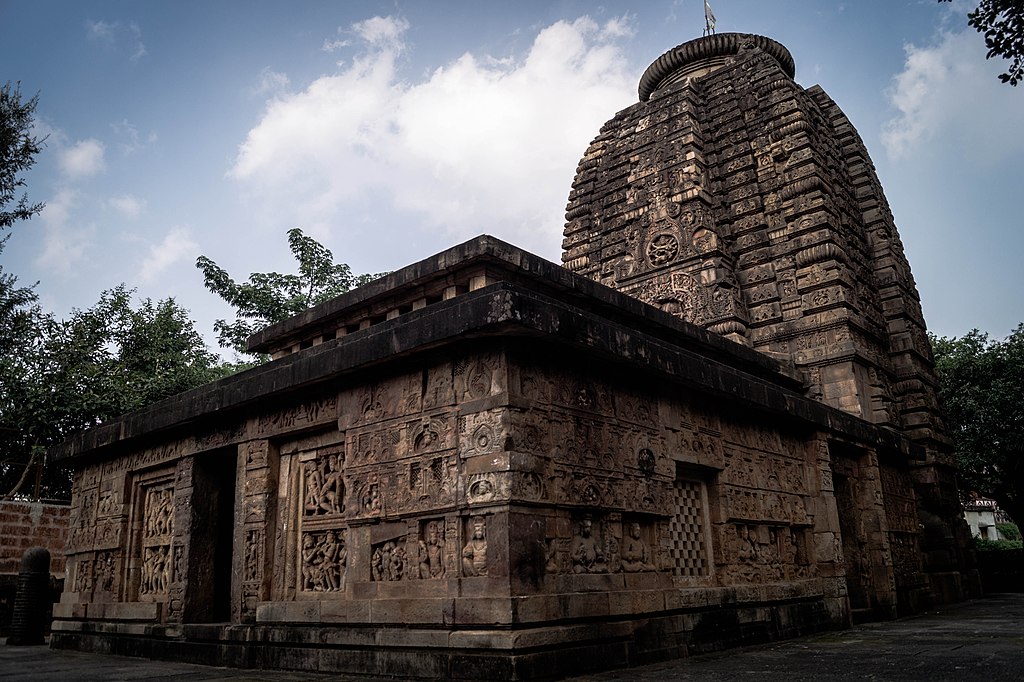
Parsurameswara Temple (IAST: Paraśurāmeśvara) also spelt Parashurameshvara, located in Bhubaneswar is considered the best preserved specimen of an early Odia Hindu temple dated to the Shailodbhava period between the 7th and 8th centuries CE. The temple is dedicated to the Hindu god Shiva and is one of the oldest existing temples in the state. It is believed to have been built around 650 CE in Nagara style and has all the main features of the pre-10th century Kalinga Architecture style temples. The temple is one among the Parashurameshvara group of temples. Parashurameshvara Temple has a vimana, the sanctum, and a bada, the curvilinear spire over its roof, rising to a height of 40.25 ft (12.27 m). It is the first temple to have an additional structure called jagamohana, compared to the earlier temples that had only the vimana. Though the temple is dedicated to Shiva, it contains sculpted images of Shakta deities, which are otherwise normally part of Shakta temples. The temple is the first in Bhubaneswar to contain depictions of Saptamatrikas, namely, Chamunda, Varahi, Indrani, Vaishnavi, Kaumari, Shivani and Brahmi. The temple is maintained and administered by the Archaeological Survey of India (ASI) as a ticketed monument. Parashurashtami is the major festival celebrated in the temple during June–July every year. The temple is one of the most prominent tourist attractions in the state of Odisha. Parashurameshvara Temple is one of the Parashurameshvara group of temples, considered to be the oldest temples in Bhubaneswar. Some historians believe Parashurameshvara Temple to have been built in the early 8th century CE., subsequent to the construction of the Satruguneswar, Bharateswar and Lakshmaneswar temples in the late 7th century, although K.C.Panigrahi places the date as 650 CE. Fergusson believed that the temple might have been initiated at around 500 CE. A mid-7th century date is agreed by most scholars based on style and the presence of the eight planets which appear over the door to the inner sanctum as the later temples portray nine. Parashurameshvara Temple was built by the Shailodbhavas, who had Shiva as their family deity. The Shailodbhavas also respected the Shakta deities and depicted Shakta images on the walls of the temple.
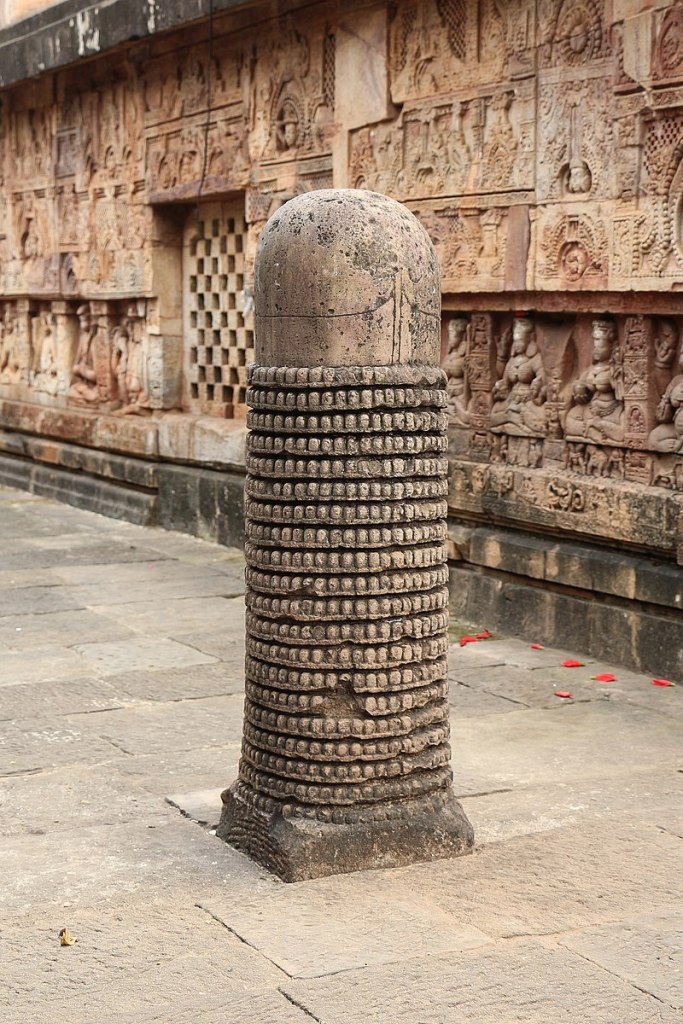
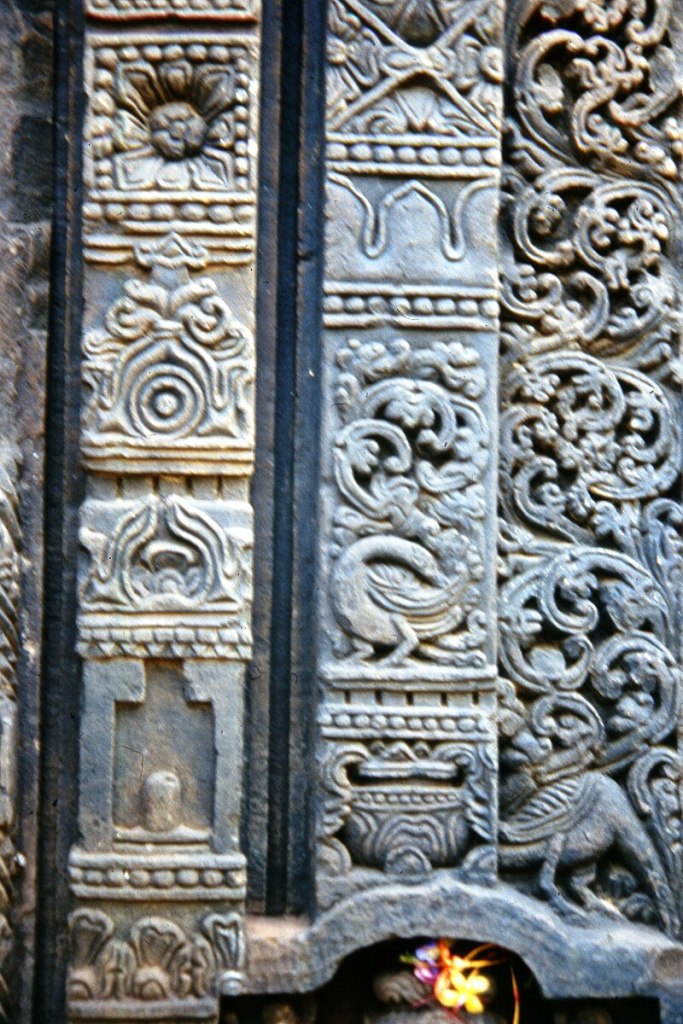
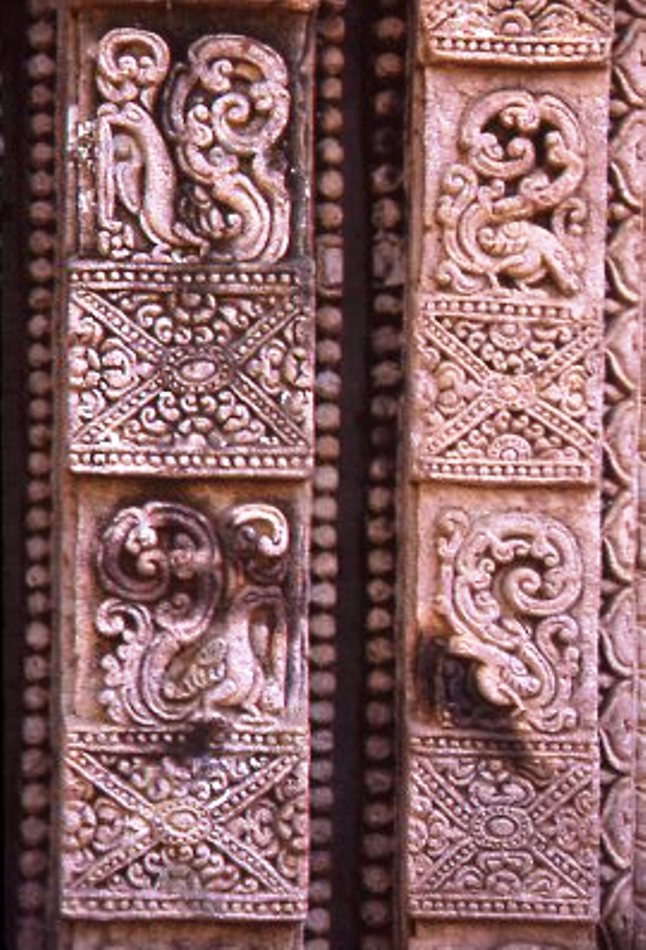
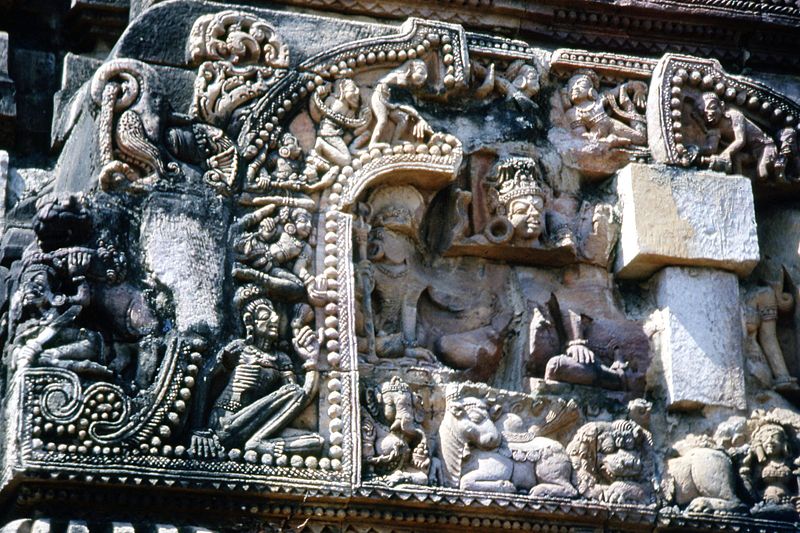
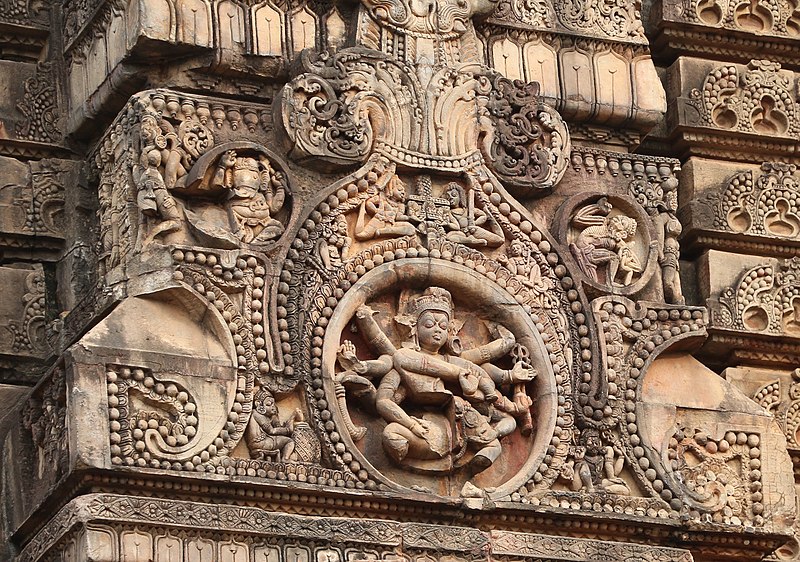
The temple was repaired in 1903, with some changes in the roof of the inner sanctum, whilst retaining most of the original structure. Being located in the eastern coast, Parashurameshvara, like other Odishan temples, was not much affected by Muslim invasions of the 12–13th centuries. The Kalingan temples have two parts: the sanctum, called vimana, and a place from where pilgrims view the sanctum, called the jagamohana (hall of worshippers). Parashurameshvara Temple is the first to have this additional structure. The initial deul temples were without the jagamohana as seen in some of the older temples in Bhubaneswar, while the later temples had two additional structures namely nata-mandapa (festival hall) and bhoga-mandapa (hall of offerings). The vimana is square in plan and the walls have sections called rathas or pagas. The vimana has a curvilinear tower (called bada) in the form of a pyramid composed of horizontal planes. The sanctum of the temple measures 9.88 × 9.75 ft (3.0 × 3.0 m) from the inside, 19.75 × 21 ft (6.0 × 6.4 m) from the outside and has a height of 40.25 ft (12.3 m). Amalaka, a stone disk with ridges on the rim, is placed over the bada of the temple. The jagamohana is rectangular in shape and has a two-element sloping roof with clerestory windows between them. The jagamohana measures 24.94 × 18.33 ft (7.6 × 5.6 m) from the inside and 29.33 × 28.58 ft (8.9 × 8.7 m) from the outside. The latticed windows are classified as pata jali where perforations are square or rectangular in shape. In addition, there are trellised windows with slabs of stone sculptures depicting dancers and musicians. Light enters the interior through doors and the latticed windows. The junction of the vimana and the jagmohana is not cleanly built, leading some scholars to postulate that the porch was added at a much later date; however, the primitive connection is attributed to the building technique. The temple was constructed by burying completed portions in inclined layers of earth up which heavy pieces of stone were dragged. The temple is one of the earliest examples of the Nagara style of Hindu temple architecture that emphasises vertical structure, as seen in subsequent temples like Mukteshvara, Lingaraj and Rajarani in Bhubaneswar and the Sun Temple at Konark. The temple contains the earliest representation of a six-armed Mahishamardini (Durga) image, shown inside a gavaksha frame from the chest upward with a headdress, karna kundala (ornament), mala (garland) and kankana (anklet). Durga is seen holding a sword in the upper left hand while in the upper right hand, she is seen pressing the face of the demon buffalo. In her left middle hand, she is seen piercing the neck of the demon with a trishula (trident), while in her lower left hand she holds a pointed weapon. In her right middle hand she holds Khetaka while in her lower right hand she holds a bow.
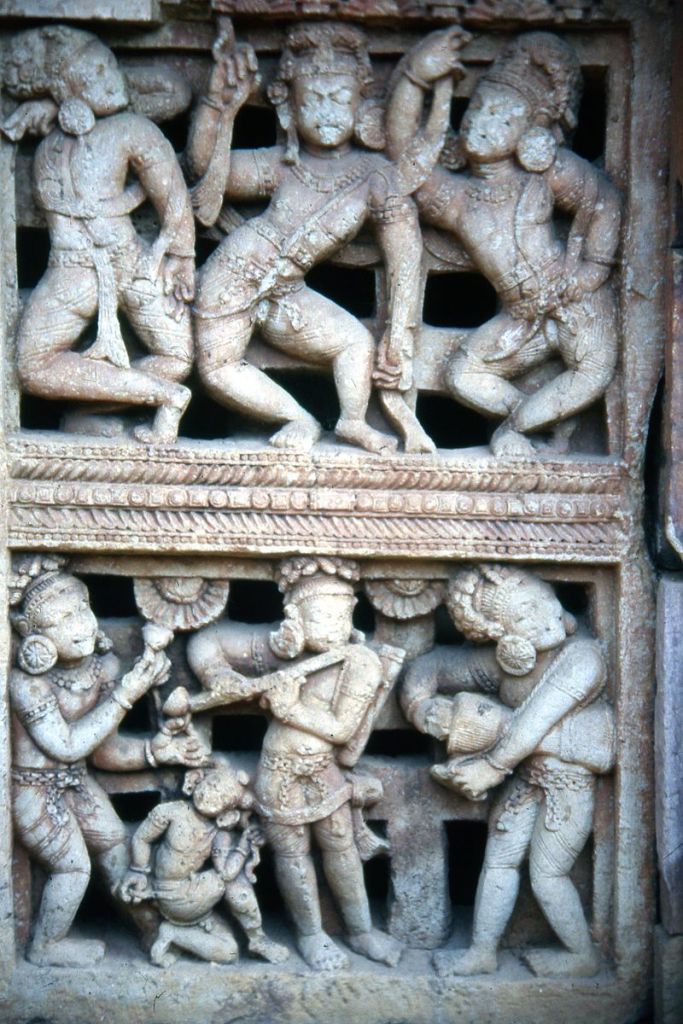

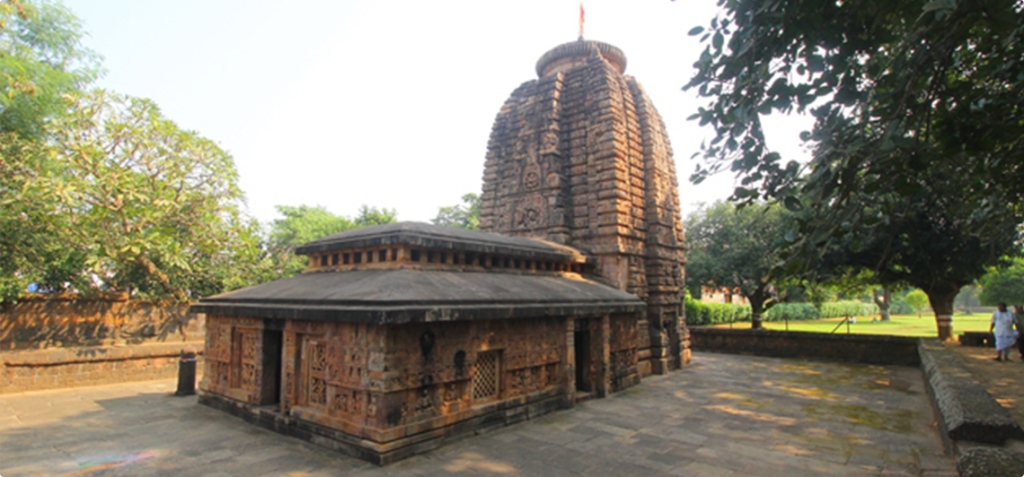
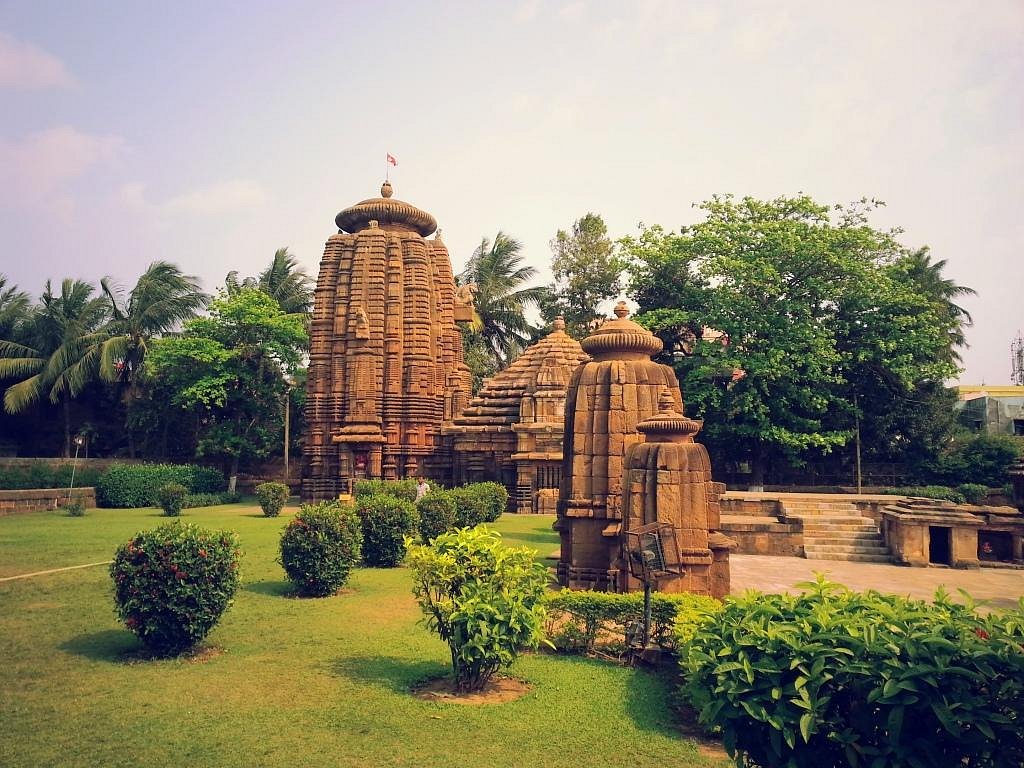
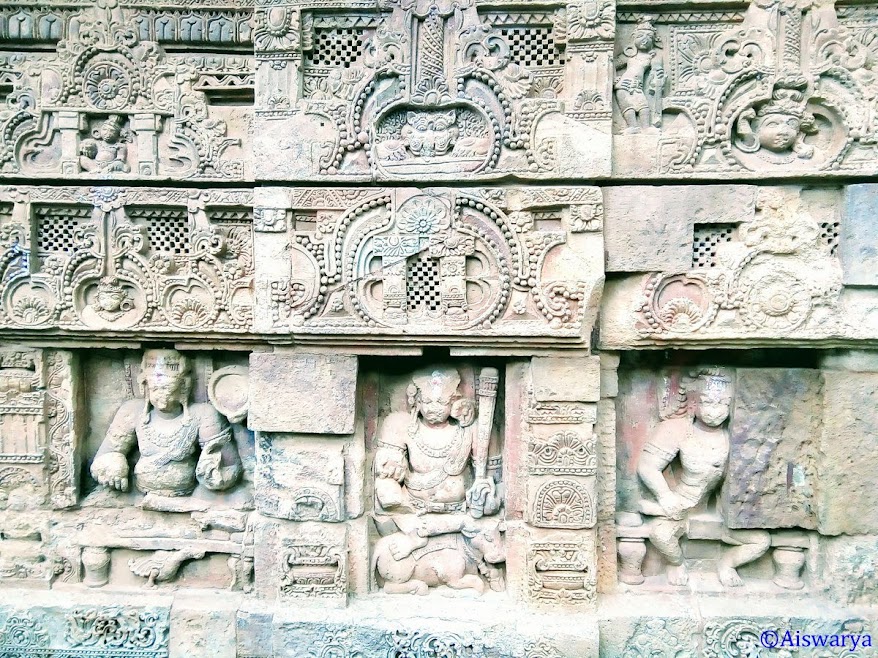
A similar image of Durga is found in the Vaital temple, which is a famous Shakta center. Though the temple is a Shaiva shrine, it contains the images of numerous Shakta deities as Parsvadevatas sculpted on its walls. The temple is the first among Bhubaneswar temples to contain Saptamatrika images, a group of seven goddesses. These images are located in between representations of Ganesha and Virabhadra. Except for Ganesha, all other images are depicted with their respective vahanas (vehicles). An eight-armed dancing Ardhanarishvara, an image of Siva-Parvati and the images of Ganga and Yamuna are also found on the wall of the temple. There are also images of Vishnu, Indra, Surya and Yama in the rectangular niches around the base of the porch. A sculpture of Kartikeya riding on his peacock vehicle is present on the southern wall. Other noteworthy carvings are those of Shiva subduing the demon-king Ravana, who is seen trying to uproot Mount Kailasa, the abode of Shiva. Shiva is sculpted as Nataraja in various tandavas (dance poses) in the temple. As with other Odisha temples, the interiors are not sculpted but left plain. Other carvings on the temple depict a variety of fruits, flowers, birds and animals in scenes and parts of designs. A floral motif trailing from the tail of a bird is common between this temple and the ones in Vaital Deula, while a motif of vase and flowers is common between it and the ones in Mukteshvara Temple. There are grotesque figures of vetalas (ghosts) on the pilasters of jaga mohan and on the faces of vimana of the temple. The figures of nagas (snake-man) and their female counterparts nagins and other females show many graceful but chaste poses. Pilgrimage is the theme of many of the scenes on the vimana. The other notable descriptive representation on the vimana is the hunting scene above the central niche on the south side, where stags are depicted running away from a hunter. On the outermost frame around the latticed window of the jaganamohana, delightful scenes of monkeys playing all manners of pranks are depicted. The vimana of the temple is a triratha with a distant semblance of a Pancharatha as evident from the projecting niches flanking the central projection. The bada of the vimana abruptly starts from the talapatna or pavement which consists of three elements instead of the usual five and encloses a parallelepiped instead of the usual cubic sanctum. Parashurameshvara represents Shiva as the lord of Parashurama, one of the avatars of Vishnu. According to Hindu legend, the temple derives its name from the penance of Parashurama and the resultant grace of Shiva.
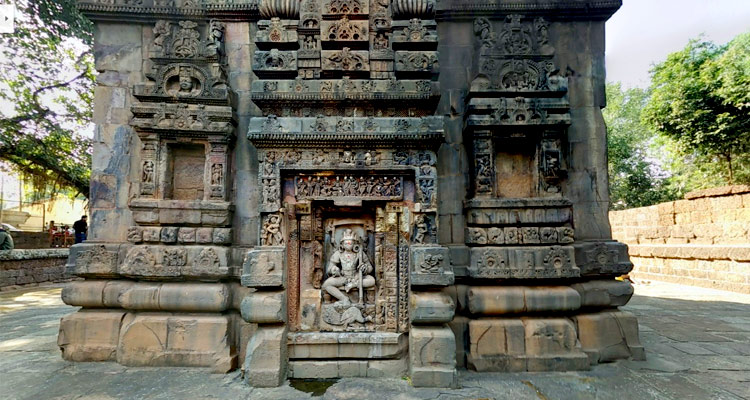
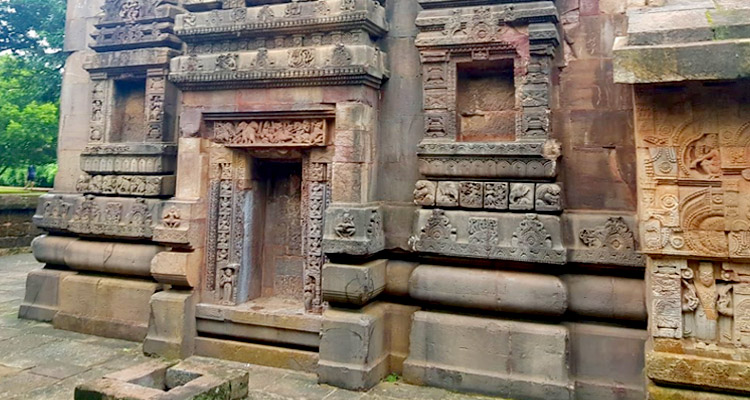
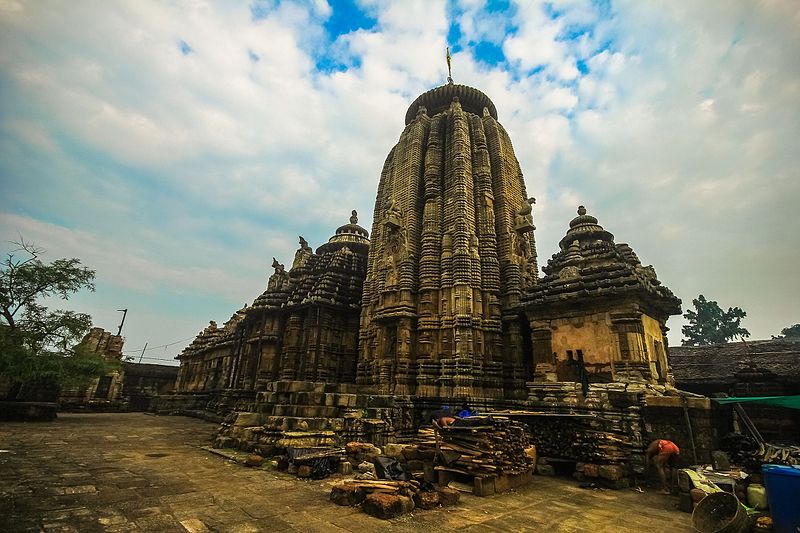
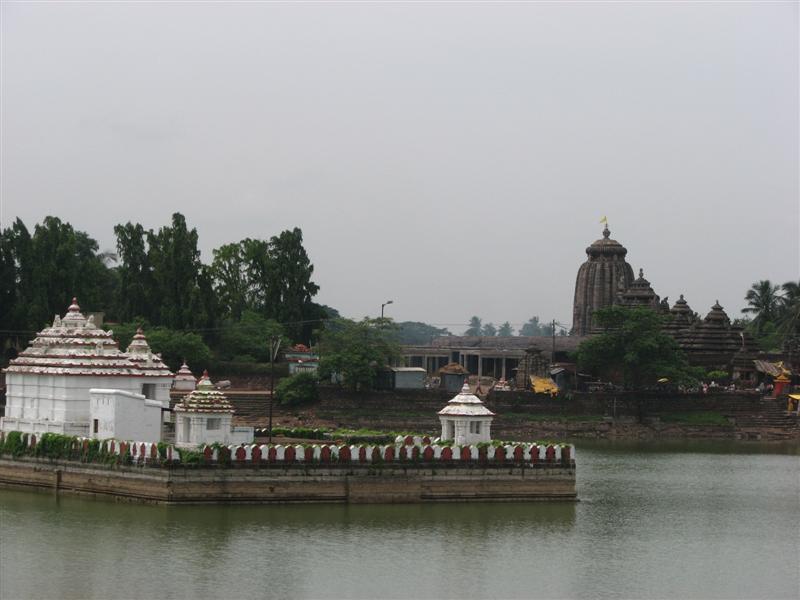
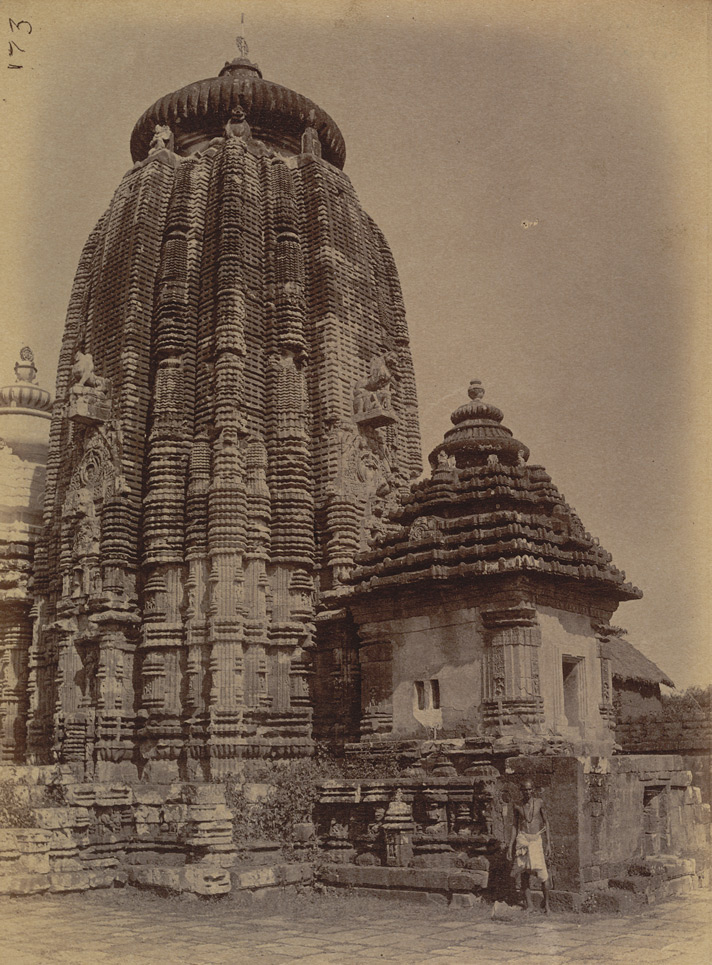

Parashuramashtami is the major festival celebrated in the temple on the 8th day of Ashadha (June–July) when the festival image of Lingaraja is taken to Parashurameshvara Temple and feasted. Parashurameshvara Temple, along with Rajarani Temple and Vaitala Deula, substantiates the existence of the Devadasi tradition during the 7th and 8th centuries CE. Devadasis were girls dedicated to worship and service of a deity or a temple for the rest of their lives and usually enjoyed a high societal status. They were usually transferred to the king’s palace and subsequently performed for the general masses. The temple is considered the best preserved specimen among the various oldest temples in the city. Ananta Vasudeva Temple (“Temple of the Infinite Vāsudeva”, Odia:ଅନନ୍ତ ବାସୁଦେବ ମନ୍ଦିର) is a Hindu temple dedicated to Krishna, an avatar of Vishnu located in Bhubaneswar. The temple was constructed in the thirteenth century, and the complete murtis of Krishna, Balarama and Subhadra are worshipped there. The temple dates back to the period of Chandrika Devi, the daughter of Anangabhima III, during the reign of the king Bhanudeva. A commemorative inscription that marked the foundation of the temple can be found in the British Museum’s collection. It appears that the original image of Vishnu was worshipped on the spot where the great temple of Ananta Vasudeva was built in the 13th century A.D. Thus in the 13th century, Queen Chandrika of Eastern Ganga dynasty was prompted to construct a new temple – the temple of Ananta Vasudeva in this place. There must have been an old temple where this Vishnu image was installed. The Marathas, who extended their empire up to river Mahanadi, were responsible for renovating the Vishnu temple at Bhubaneswar in the late 17th Century. In form, the temple resembles the Lingaraj temple, but includes Vaishnavite (Vishnu related) sculptures. The temple has longitudinal bands of miniature shikharas (shrines), exactly like those in Lingaraj temple, with the minor difference that the number of the shikharas forming one longitudinal band in its case is only three. The sculpture in the exterior walls varies in character in each temple in Bhubaneswar. Most of the female sculptures in the temple walls are overly ornamented and lack originality. The sanctum has the icons of Krishna, Balarama, and Subhadra. Balarama stands under a seven-hooded serpent, Subhadra holds pot of jewels and a lotus in her two hands, keeping her left foot over another jewel pot, while Krishna holds a mace, chakra, lotus, and a conch.
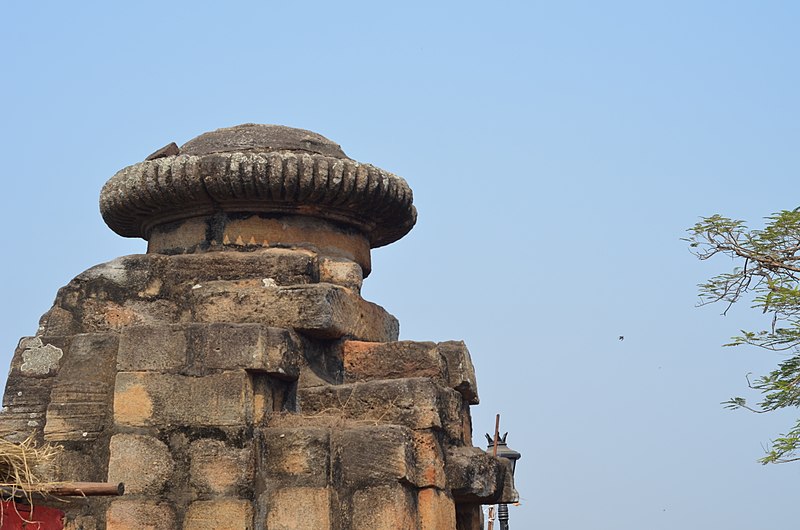
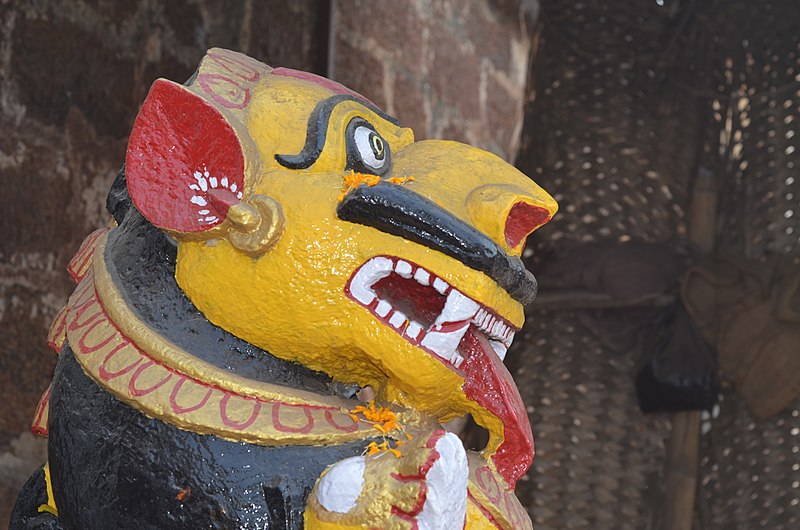
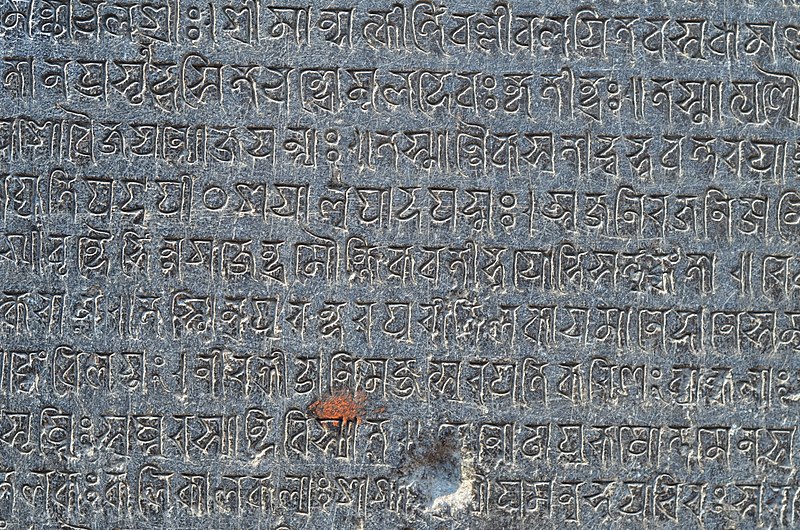
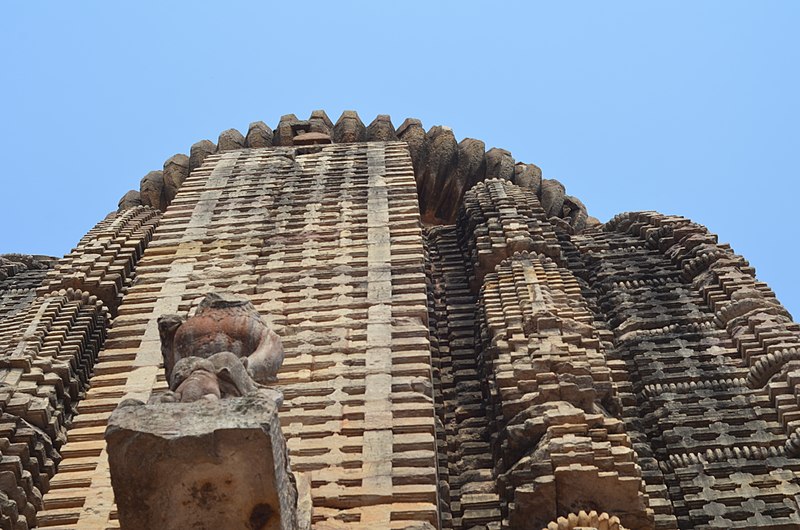
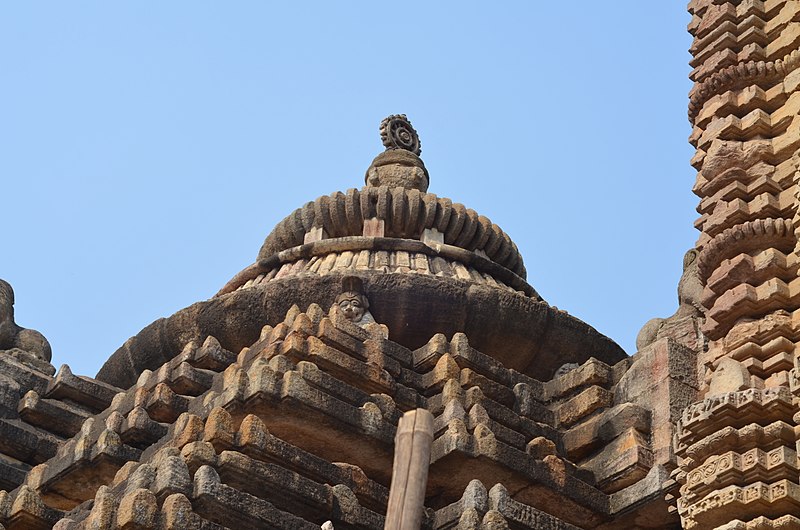
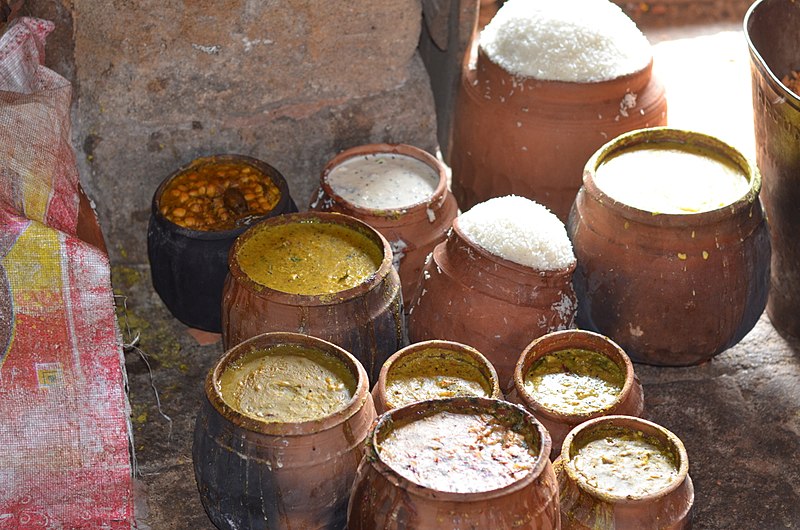
The idols found in the garbhagrha (sanctum sanctorum) of the temple have complete structure unlike the images of the Jagannath Temple, Puri. Here the shrimurtis (idols) are made of black granite stone, rather than wood, as seen in the Puri temple. For this temple only the city gains its name as Chakra kshetra (circular place), whereas Puri is named Shankha kshetra (conch-shaped place). Yameshwar or Jameshwar Temple is a very old temple dedicated to Shiva being worshiped by Yama. It is situated in Bhubaneswar, near Bharati Matha, in Jameshwar Patna. The main Vimana is in Rekha Deula style, Jaga mohan is in Pidha Deula style and there is a detached mandapa. Many portions of the temple have been damaged by natural calamities as the temple is built by sandstone. The outer Prakara is built by laterite. The icons around the temple include many motifs like Dikpalas, Amarous couple, Nayikas, Vidalas, Erotics, elephant procession etc…. The inner Garbhagriha houses Shivalinga within a circular yonipitha. The temple was built in the 13th-14th century during the Eastern Ganga dynasty. The Jiuntia or Puajiutia festival which is also called Dwitvahana osha falling in Ashwin is very popular in this temple, others being Shivaratri and Kartik Purnima. All Mondays and Sankramana days are important in this temple. People who visit this temple during Bharani nakshatra are said to be free from all miseries. Udayagiri and Khandagiri Caves, formerly called Kattaka Caves or Cuttack caves, are partly natural and partly artificial caves of archaeological, historical and religious importance near the city of Bhubaneswar. The caves are situated on two adjacent hills, Udayagiri and Khandagiri mentioned as Kumari Parvata in the Hathigumpha inscription. They have a number of finely and ornately carved caves built during the 1st century BCE. It is believed that most of these caves were carved out as residential blocks for Jain monks during the reign of King Kharavela. Udayagiri means “Sunrise Hill” and has 18 caves while Khandagiri has 15 caves. The caves of Udayagiri and Khandagiri, called lena or leṇa in the inscriptions, these were taken out mostly during the reign of Kharavela for the abode of Jain ascetics. The most importance of this group was Ranigumpha in Udayagiri which is a double storeyed monastery. Other important caves include Hathi Gumpha, Ananta Gumpha, Ganesha Gumpha, Jaya Vijaya Gumpha, Mancapuri Gumpha, Bagha/Byaghra/Vyaghra Gumpha and Sarpa Gumpha.
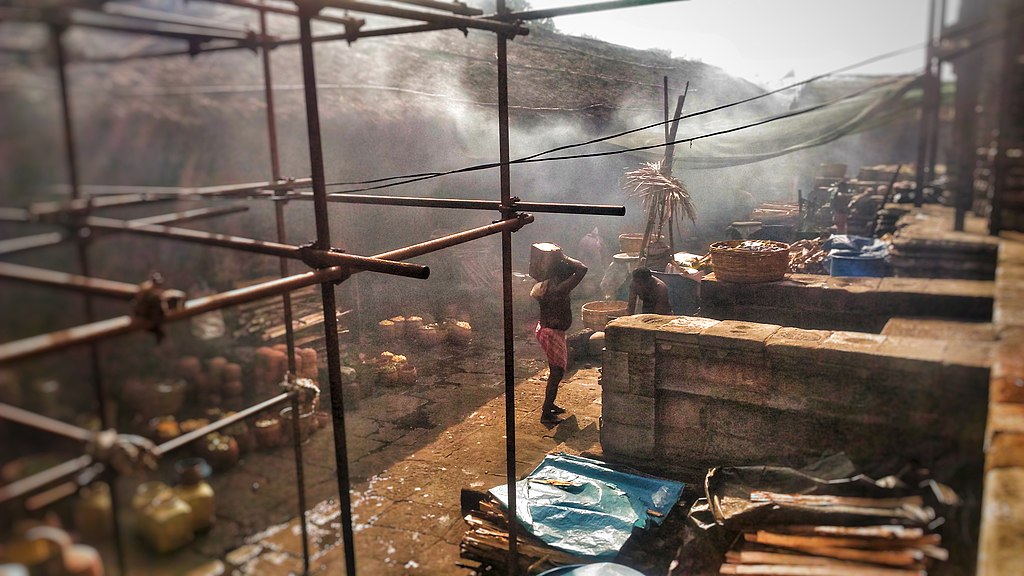
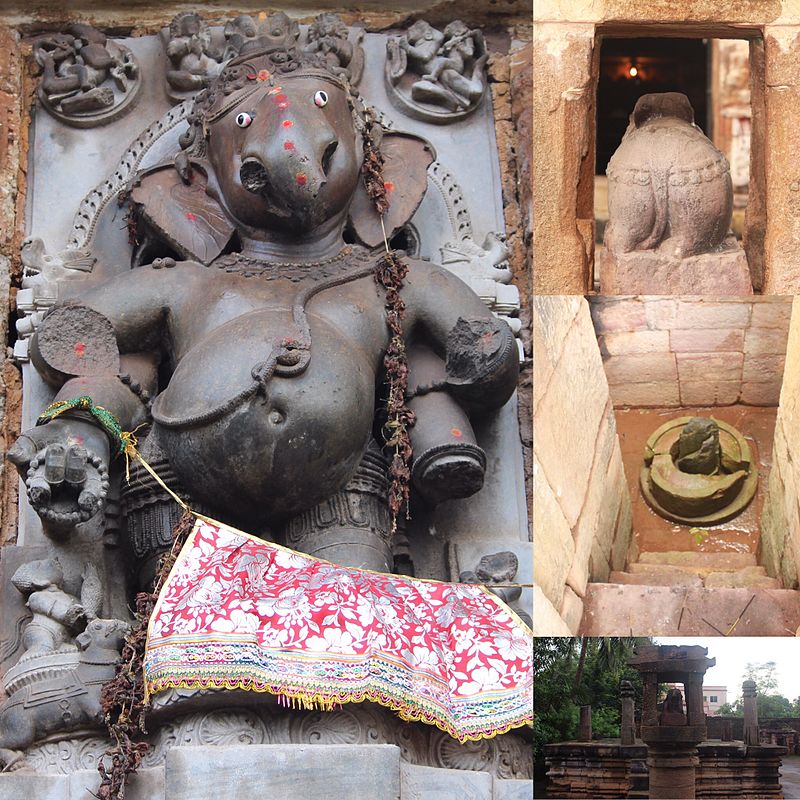
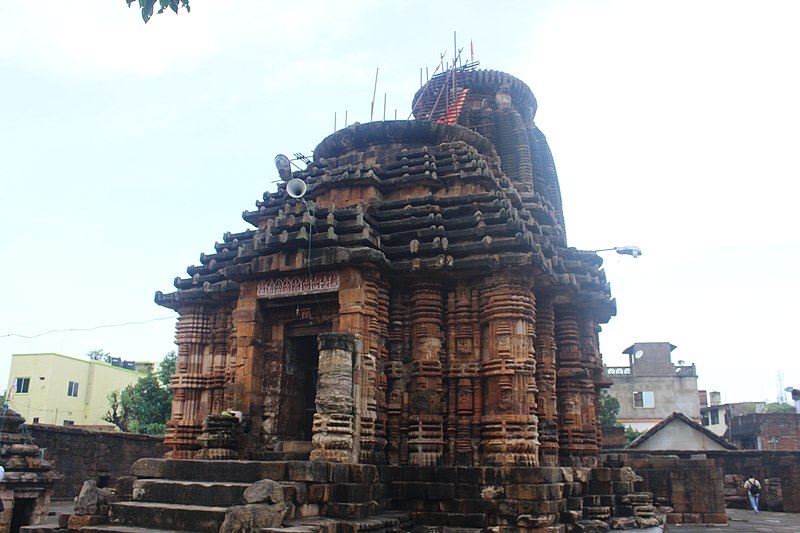
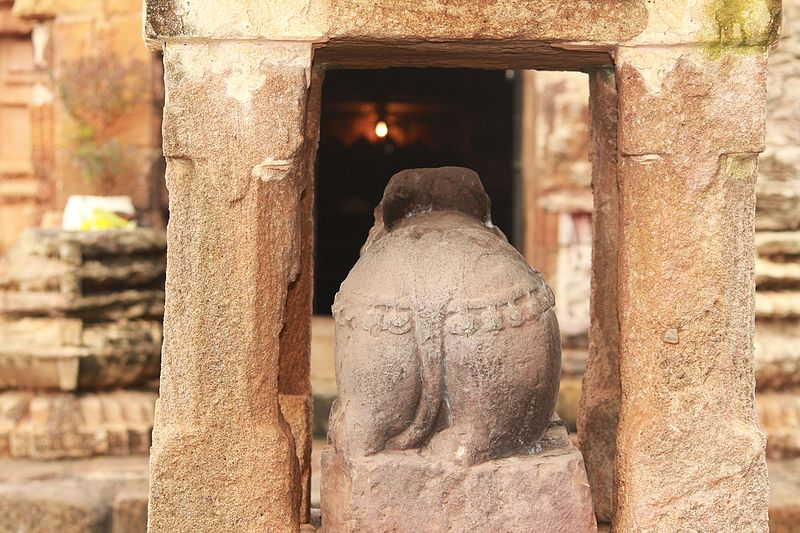

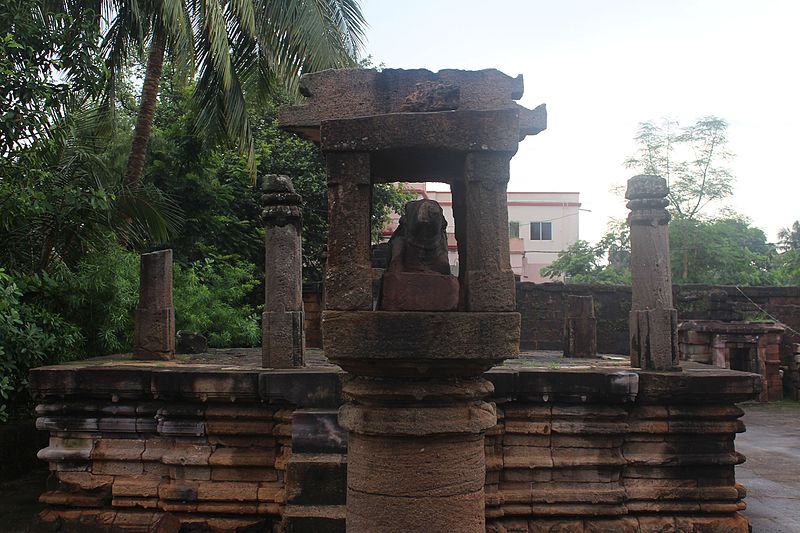
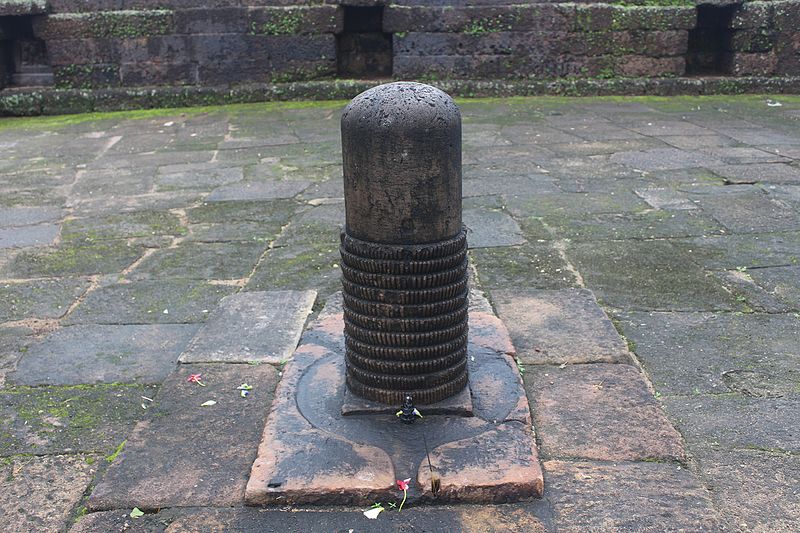
The Archaeological Survey of India (ASI) has listed that Udayagiri and Khandagiri Caves in the list of “Must See” Indian Heritage. The Udayagiri and Khandagiri Caves are listed as one of the Adarsh Smarak Monument by ASI. B. M. Barua, based on a reading of line 14 of the Hathi Gumpha inscription, declared that a total of 117 caves were excavated by Kharavela and others on the Kumari hill (Udayagiri). Marshall has counted more than 35 caves in both the hills, while M.M. Ganguli has enumerated only 27 caves. The number of existing caves at Udayagiri is 18, while Khandagiri has 15. The local names of the existing caves are listed, numbered according to the enumeration of the Archaeological Survey of India. In Udayagiri, Hathi Gumpha (cave 14) and Ganesha Gumpha (cave 10) are especially well known for their historically important sculptures and reliefs. Raninka Na’ara (Queen’s Palace Cave, Cave 1) is also an extensively carved cave and elaborately embellished with sculptural friezes. Khandagiri offers a fine view back over Bhubaneswar from its summit. The Ananta Cave (Cave 3) depicts carved figures of women, elephants, athletes, and geese carrying flowers. The Udayagiri hills are on the right-hand side as the visitor approaches from Bhubaneswar. Compared to Khandagiri, Udayagiri offers more beautiful and better maintained cave shrines. There are 18 caves in Udayagiri. Rani Gumpha is the largest and most popular cave among the caves of Udayagiri and Khandagiri. The word Rani means “queen”. Although it is not an architectural marvel, it has some ancient beautiful sculptures. This cave is double storeyed. Each storey has three wings and the central wing is bigger among all the three wings. The lower floor has seven entrances in the middle wing whereas the upper floor has nine columns. The upper portion of the central wing has relief images depicting the victory march of a king. Many of the cells have carved dwara pala images; some of them are disfigured. The area that connects the central wing with right and left wings have some panels where the sculptures of wild animals, fruit-laden trees, human figures, women playing musical instruments, monkeys and playful elephants are found. The pilasters contain the torana (arches) decorated with sculptures of Jain religious importance and royal scenes.
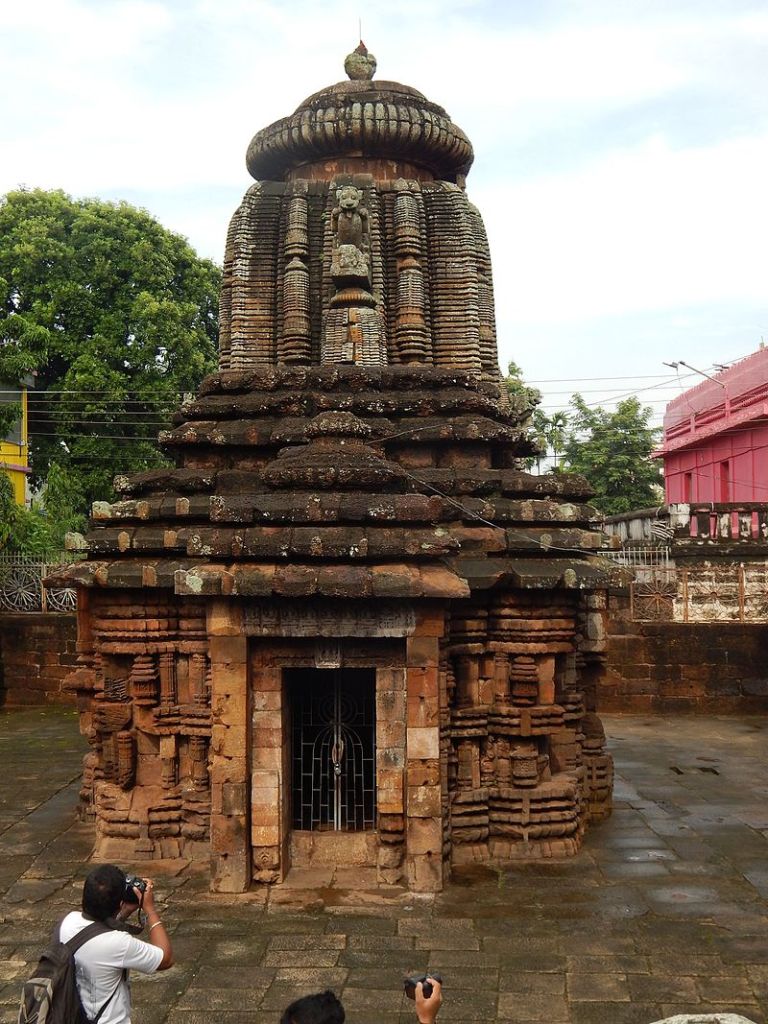
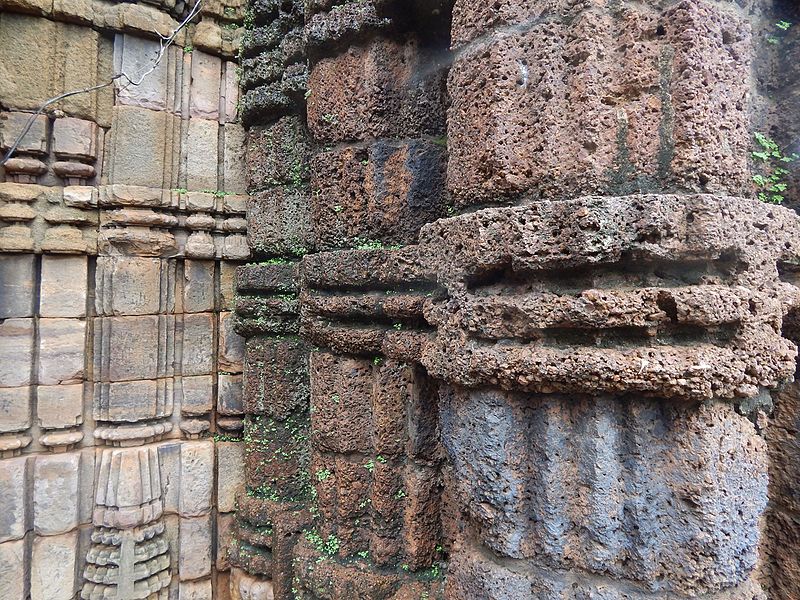

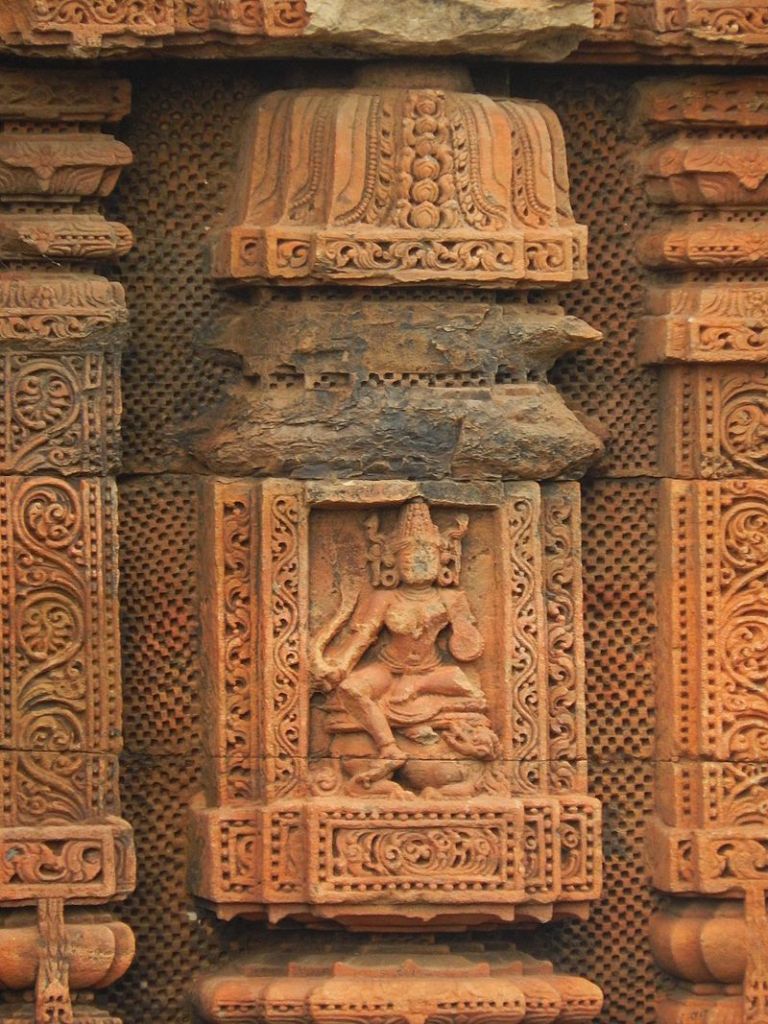
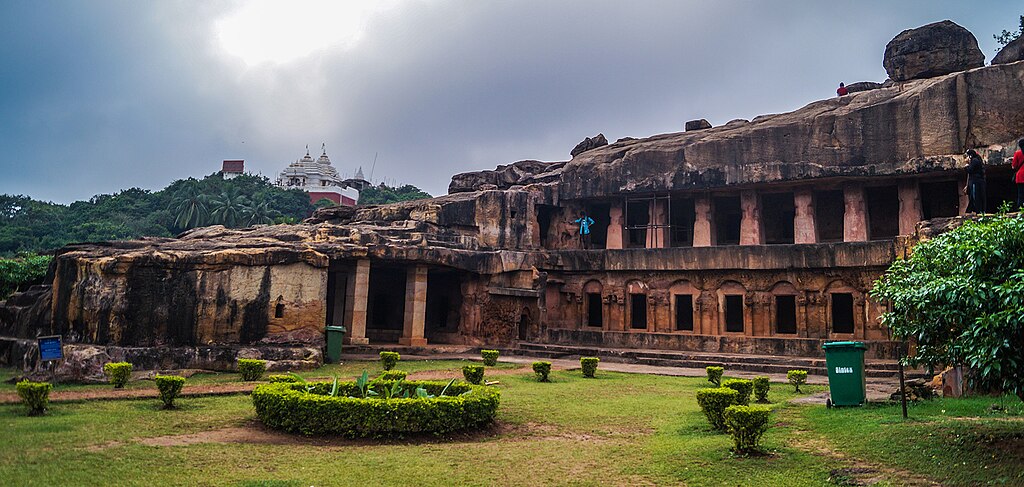
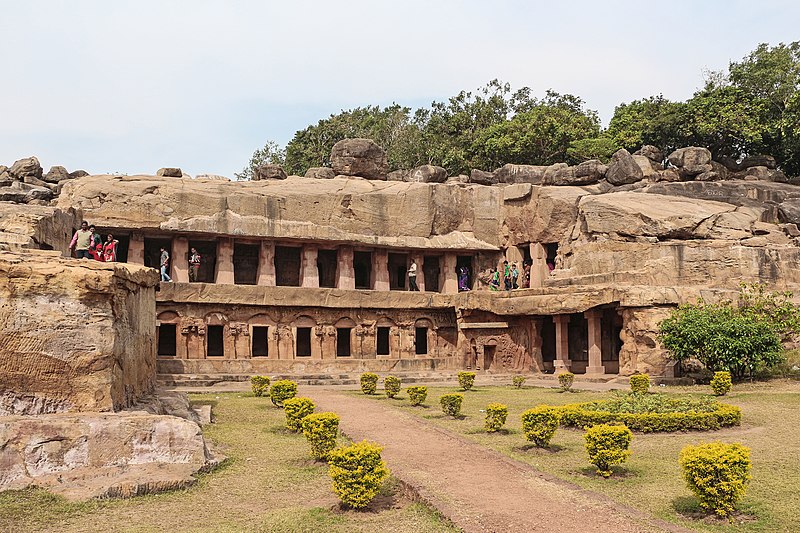
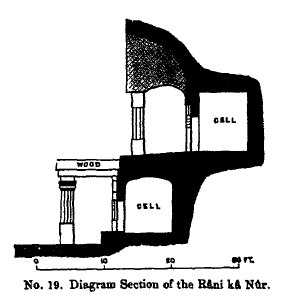
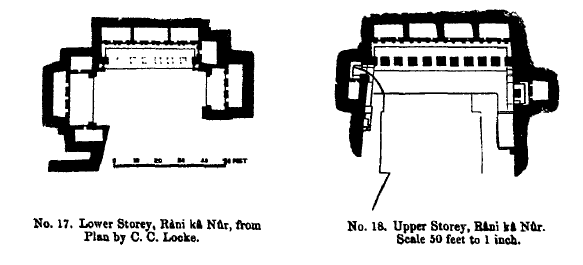
Bajaghara Gumpha is very simple and small. It has a stone bed and pillow and it was used as the Jain monks’ shelter in ancient times. Apart from the plain rectangular-shaped pillars, there is no other sculpture in this cave. Chota Hathi Gumpha is small in size. It has six small elephant figures in the facade and a statue of a guardian. Alakapuri Gumpha has a relief sculpture of a lion holding its prey in its mouth. The cave has pillars with winged human figures (divine beings). It is double storeyed. Jaya Vijaya Gumpha is double storeyed. The cave has a carving of a female wearing heavy earrings, bands, beautifully decorated hair. On one hand of the carving are a parrot and the other resting on her waist. Panasa Gumpha is a very small and simple cave without any significant features. Thakurani Gumpha is double storied but is very simple in style. It has a few tiny relief sculptures. Patalapuri Gumpha is slightly bigger with a pillared verandah. Mancapuri and Swargapuri Gumpha is double storeyed. Manchapuri cave depicts two male and two female figures worshipping the Kalinga Jina that Kharval brought back from Magadha. It has a damaged Jain religious symbol which was probably used for worship. There are three inscriptions: one inscription talks about the chief queen of Kharavela, and the other two refer to Kudepasiri, the successor of Kharavela and Badukha, the son or brother of Kudepasiri. Ganesha Gumpha is one of the most important caves in Udayagiri. The cave is named for the carved figure of Ganesha on the back of its right cell. Of course, it would have been carved in the later period and it cannot be the original work. The cave has two large statues of elephants carrying garlands at the entrance and is the first example of sculpture animals used as a guard to the entrance. Also, the carved figures of dwara palas are found at the entrances. The carvings in this cave narrate the story of the elopement of Bassavadatta, Princess of Ujjayini, with King Udayana of Kausambi in the company of Vasantaka. Jambesvara Gumpha is a very simple and small cave with one column and two pilasters. The inscription tells that it is the cave of Nayaki, wife of Mahamade. Vyaghra Gumpha is one of the popular caves in Udayagiri. The cave, which is in ruins, has an entrance carved like a tiger’s mouth, with the single-cell forming the tiger’s throat. It is one of the most photographed sites in Udayagiri. The word vyaghra means “tiger”. The inscription found here tells that this cave belongs to the city judge Sabhuti. Sarpa Gumpha is an unusually small cave containing two inscriptions. The word sarpa means “snake”.

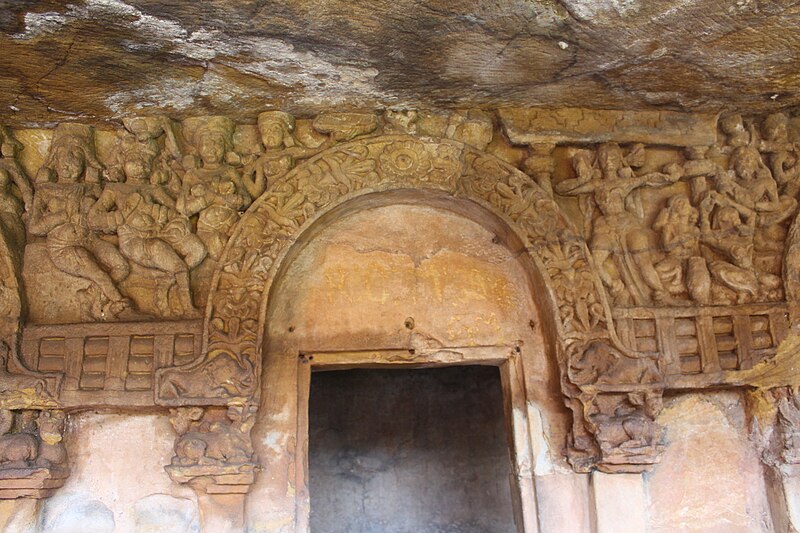
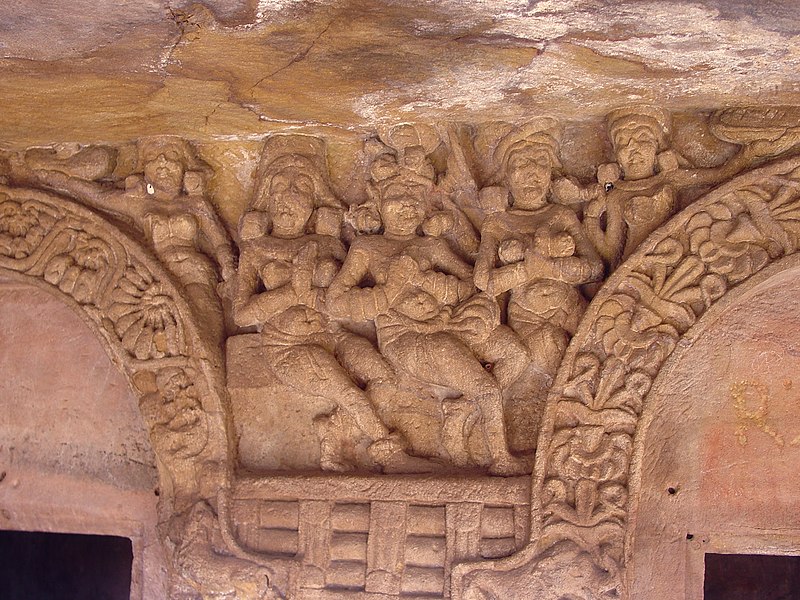
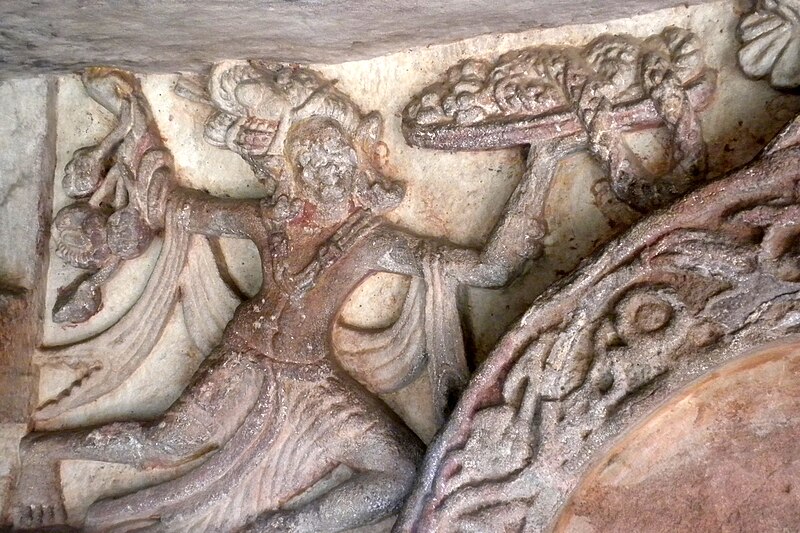
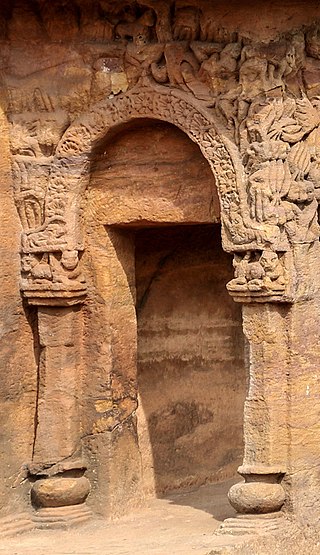
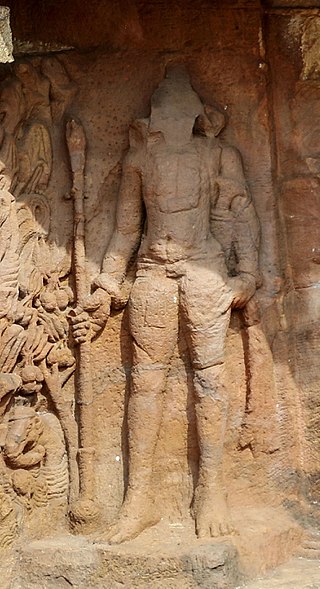
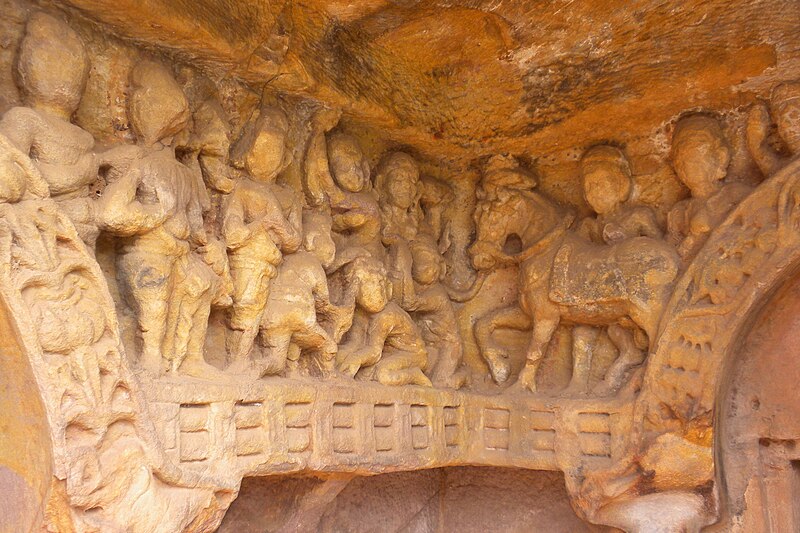

Hati Gumpha is a large natural cavern with an inscription by Kharavela which is the main source of information about him. The cave is known as Hati Gumpha due to its exquisite carvings of elephant. The word hati means “elephant”. Dhanaghara Gumpha is a small cave that has two wide pillars and dwara pala sculptures carved at the entrance. Haridasa Gumpha is a small cave with three entrances and a verandah on the front side. There is an inscription found here. Jagannatha Gumpha is a roughly cut cave with three entrances. Rasui Gumpha is an unusually very small cave. The Hathigumpha inscription starts with a version of the auspicious Jain Namokar Mantra venerating Arihant and Siddhas for in Jainism. The Hathigumpha cave (“Elephant Cave”) has the Hathigumpha inscription, written by Raja Kharavela, the king of Kalinga in India, during the 2nd century BCE. The Hathigumpha inscription consists of seventeen lines incised in deep cut Brahmi letters on the overhanging brow of a natural cavern Hathigumpha in the south side of the Udayagiri hill. The inscription also refers to the Kharaval’s feat of bringing back the status of Agra-Jina (transl. Rishabhanatha) which was taken by Nanda empire. It faces the rock edicts of Asoka at Dhauli, situated about six miles away. Besides Hathigumpha Inscription of Kharavela, there are some other minor Brahmi inscriptions in the twin hillocks of Udayagiri and Khandagiri, which were deciphered earlier by Prof RD Banergy during 1915–16 (Epigraphic Indica-XIII) and BM Baraua (Indian Historical Quarterly-XIV). Sadananda Agrawal has given further clarifications about them and is produced as under: I- Mancapuri cave inscription (Upper storey) refers to the construction of temple of arhats and excavation of cave for Jain monks by Aga-mahisi, chief queen of Kharavela. The inscription also mention Kharavela as chakravatin of Kalinga. II- Mancapuri cave inscription (Upper storey) is incised on a raised bend between the 3rd and 4th doorways from the left and contains a single line. The text in Devanagari script is as under: ऐरस महाराजस कलिंगाधिपतिना महामेघवाहनस कुदेपसिरिनो लेणं. Translation – This is the cave of Aira Mahameghavahana Maharaja Kudepasiri, the overlord of Kalinga. Note:- Kudepasiri seems to be the immediate successor of Kharavela. III-Manchapuri cave inscription (Lower storey)-B has been engraved on the right wall of Veranda, to the right of the entrance to the right-hand side chamber of the main wing, consisting of one line. The text in Devanagari script is as under: कुमारो वडुखस लेणं. Translation – [This is] the cave of Prince Vaḍukha. Note:- On palaeographic ground Prof Banergy considers this inscription to be a little earlier than the inscription of King Kudepasiri. According to Sadananda Agrawal, Prince Badukha stands as an obscure figure in history, but Badukha seems to be the son or brother of Kudepasiri.
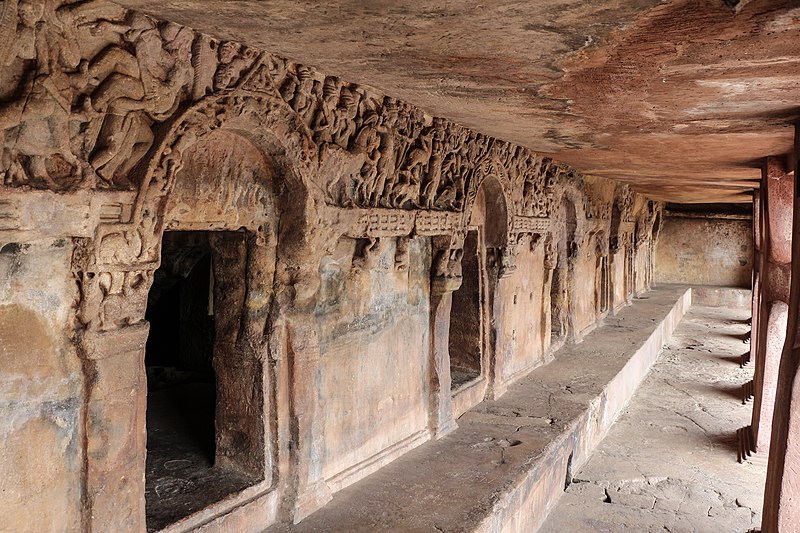
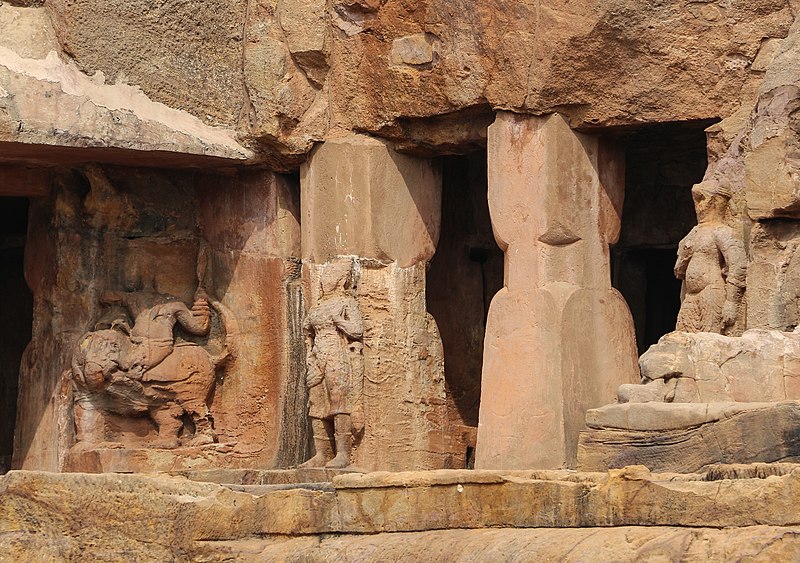
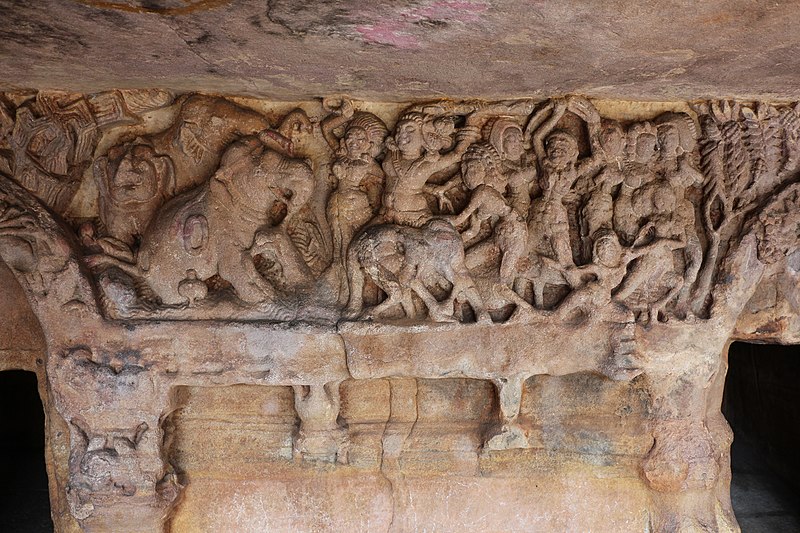

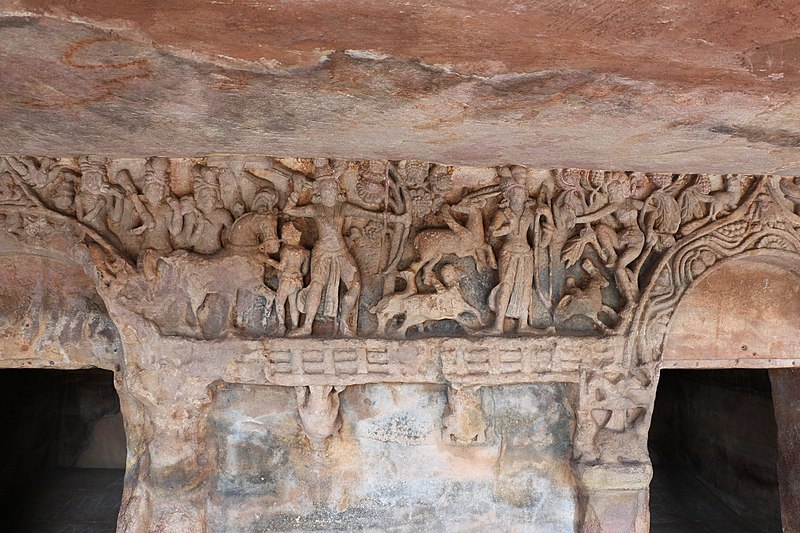
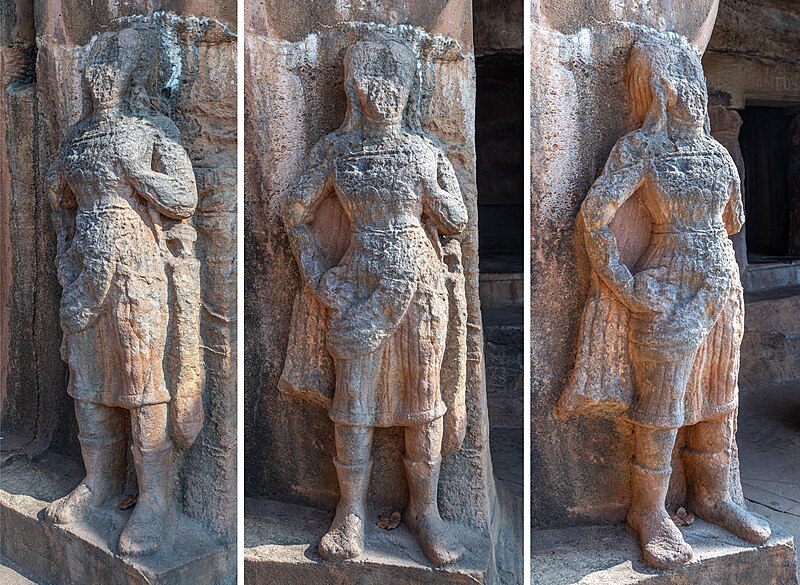

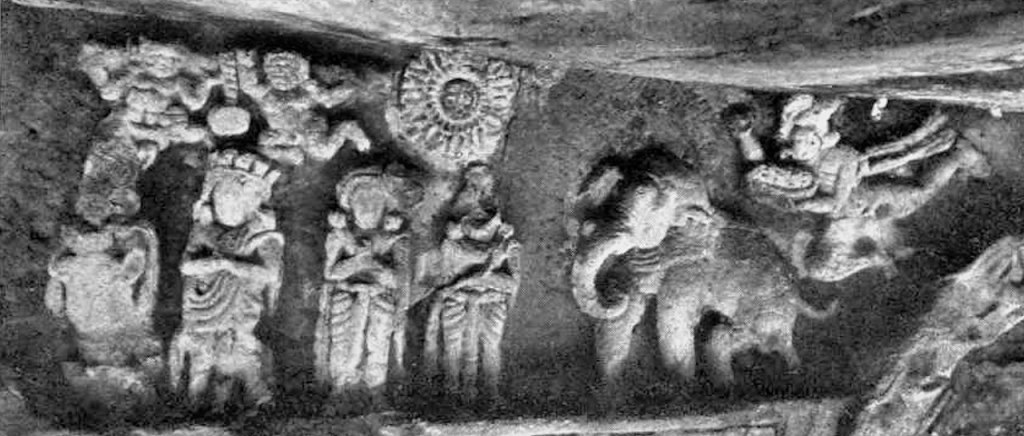
IV- Inscriptions in the Sarpagumpha (Over the doorway) consisting of one line is incised over the doorway of the Sarpagumpha. The text in Devanagari script is as under: चूलकमस कोठाजेया च. Translation – The chamber and veranda/or side chamber of cūlakama. Note:- However Dr. Sahu interpreted Ajeya as being united by a Sandhi qualifying Koṭha thereby denoting invincible. But he ignored the conjunction ca (Devanagari: च) which follows Koṭha(Devanagari:कोठा) and Jeya (Devanagari:जेया). V- Inscription in the Sarpagumpha ( to the left of the doorway) The text in Devanagari script is as under: L.1- कंमस हलखि. L.2- णय च पसादो. Translation: [The pavilion is the] gift of Kamma and Halakhina. Note:- Most probably Halakhiṇa was the wife of Kamma. Chūlakamma – found in the inscription No. IV and Kamma of this record indicates official designations rather than the proper names. Kamma may be taken as minister of works (Karma saciva) and Cūlakamma appears to be a junior cadre of a minister in the Department of works. VI- Haridas cave inscription contains one line that has been incised over one of the three entrances to the main chamber of the cave from the veranda. The text in Devanagari script is as under: चूलकमस पसातो कोठाजेया च. Translation: The chamber and veranda (or side chamber) are the gifts of cūlakama. VII- Vyāghragumphā inscription is incised on the outer wall of the inner chamber. The text in Devanagari script is as under: L.1- नगर अखंदस. L.2- स भूतिनो लेणं. Translation: The cave of Bhūti, the city judge. VIII- Jambesavara cave inscription has been engraved over the entrances to the inner chamber of the cave. The text in Devanagari script is as under: महामदास बारियाय नाकियस लेणं. Translation: The cave of Mahāmāda Nākiya and Bāriyā. X- Tatowāgumphā inscription (Cave No −1) is incised over one of the entrances to the inner chamber. The Text reads in Sanskrit as पादमुलिकस कुसुमस लेणं x [॥]. Translation: The cave of Kusuma, the padamulika. Notes:- There is a syllable after the word lenam, which may be read as ni or phi, padamulika literally means, one who serves at the feet [of king]. Note:- Sadananda Agrawal has interpreted Masikanagara as Asikanagara and identified with the city Adam (Nagpur district). In view of the evidence of a highly prosperous city unearthed at Adam, Prof AM Shastri is of the opinion that Adam itself represents the Asikanagara of Hathigumpha inscription. It is worth noting in the present context that a terracotta sealing having a legend, has been discovered from Adam, situated on the right bank of the river Wainganga, which reads Asakajanapadasa (Devanagari: असकजनपदस). XI- Ananta Gumpha inscription (A) is incised on the architrave between the left ante and the fifth pillar. The text in Oriya script is: Odia: ଦୋହଦ ସମଣନ ଲେଖ (Devanagari: दोहद समणनं लेणं). Translation: The cave of the Dohada Śramaṇas.
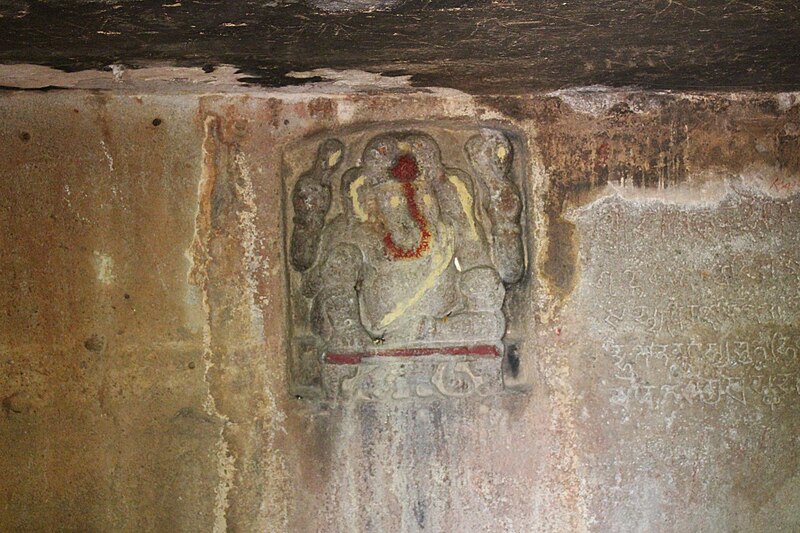
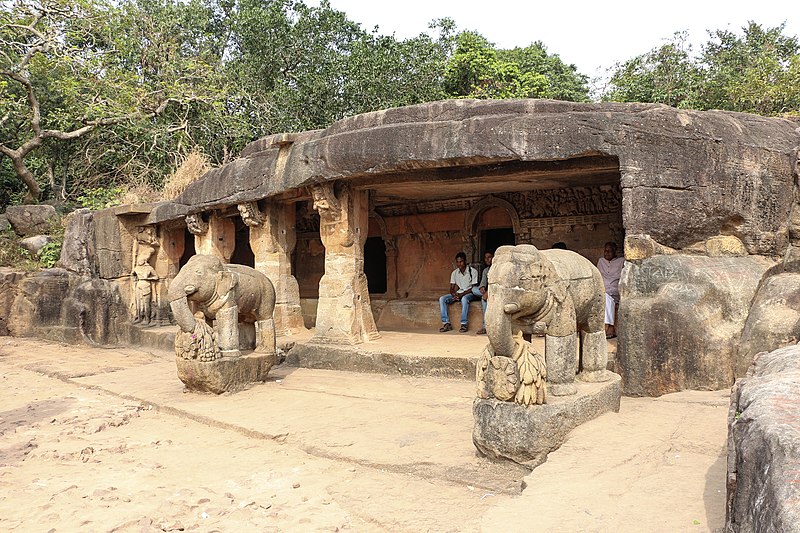
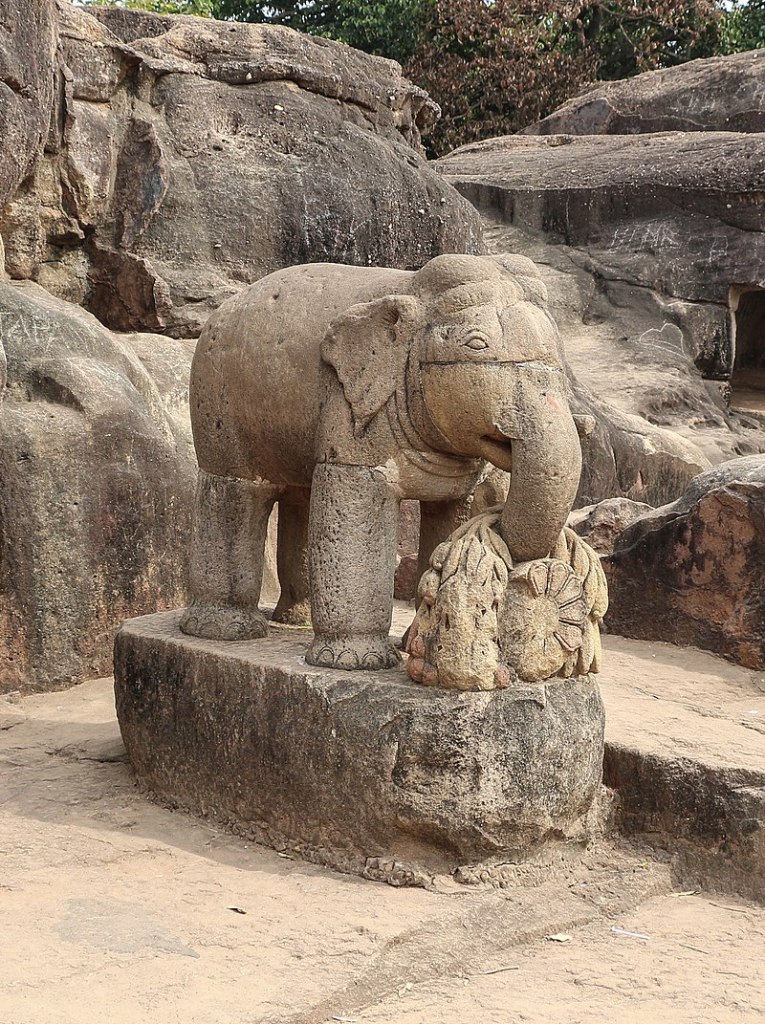
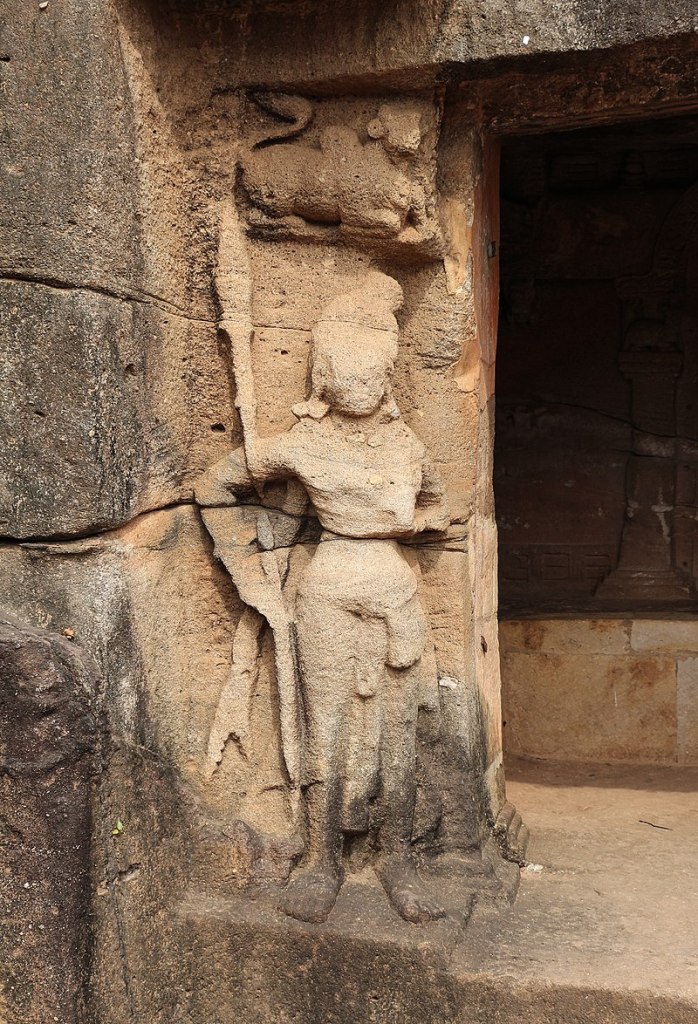
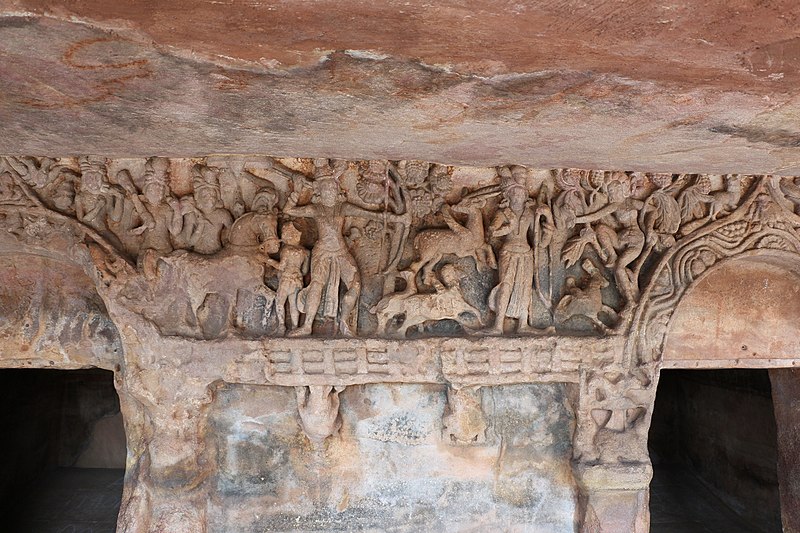
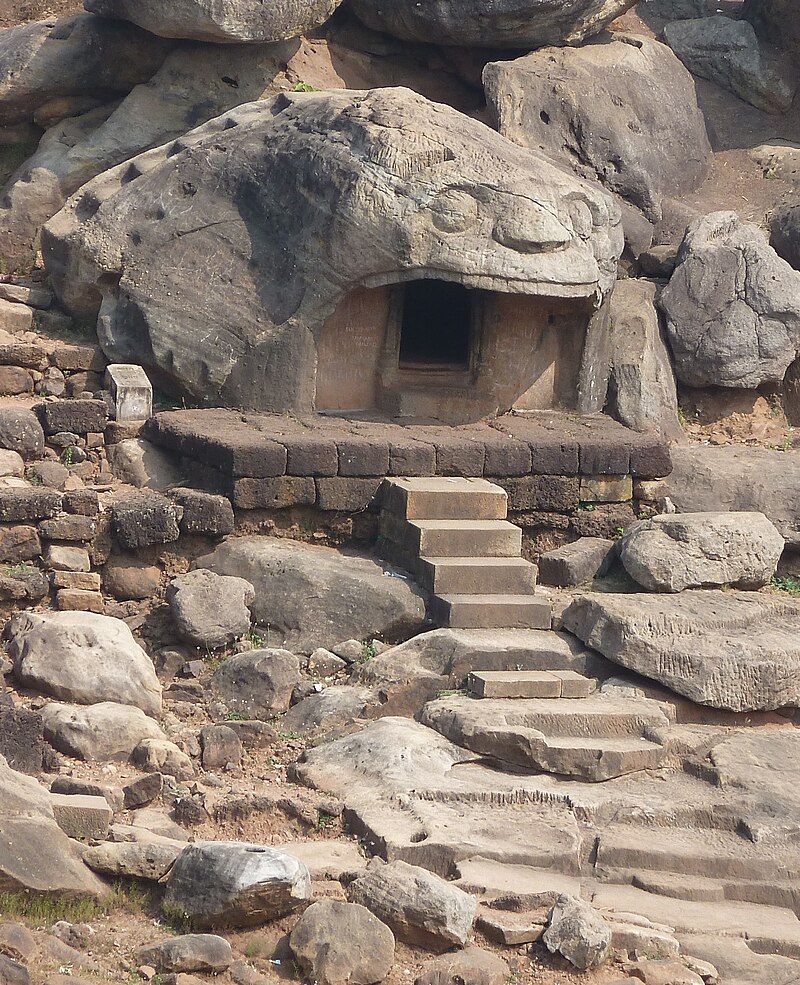
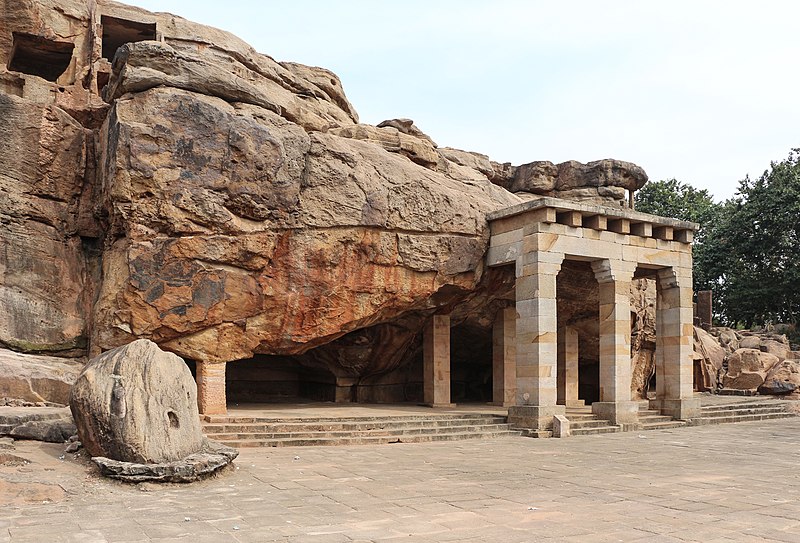
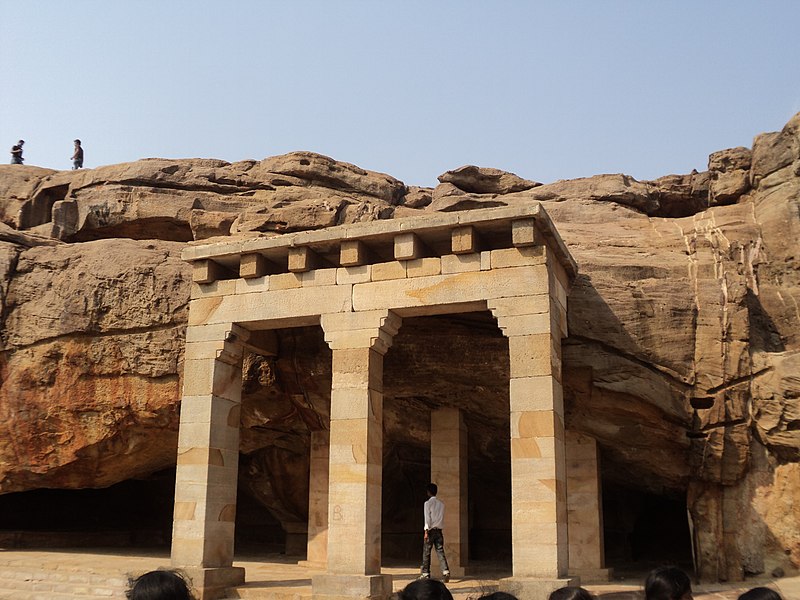
The Khandagiri hills fall on your left side when you enter into this area from Bhubaneswar. There are 15 caves in Khandagiri. These caves were renovated during the reign of Uddyotakeshari of Somavamshi dynasty. Tatowa Gumpha got parrots carved above the entrance arch and hence the name came. It has two dwarapala figures too. There are sculptures of friezes, railing, arch, with kalasa inside the cave. Tatowa Gumpha is decorated with sculptural friezes like nayikas, gandhrvas, different animals and birds, chaitya arch, pilaster design, rafters and vaulted roof. Ananta Gumpha has sculptures of women, elephants, geese, etc. Tentuli Gumpha is a small rock-cut chamber with just one column. Khandagiri Gumpha is a roughly cut cell and has double storeys. Dhyana Gumpha is a roughly cut cell. Navamuni Gumpha is a roughly cut cell with the sculptures of nine Jain Tirthankaras and Sasana Devis. These sculptures were added to the caves in the 11th century by Somavamshi dynasty. Barabhuji Gumpha has altogether twenty five figures of Tirthankaras on the walls of the cell on three sides, Parsvanatha being repeated twice. Beneath the Tirthankara, their respective Sasanadevis are found. Chakareswari is depicted with 12 arms giving the cave name Barabhuji. The image is now worshipped as a Brahminical deity. These sculptures were added to the caves in the 11th century by Somavamshi dynasty. Trusula Gumpha has three sculptures of Rishabha Deva who is found in the Kayotsarga posture. Apart from these sculptures, there are sculptures of 24 Jain Tirthankaras which look rough. Ambika Gumpha has three relief sculptures, two of Rishabhanatha and one Amra the sasana-devi of Neminatha. Lalatendu Keshari Gumpha got 2 images of Rishabhantha and 3 of Parshvanatha in cell 1 and 2 images of Parshvanatha and 1 of Rishabhantha in cell 2. These sculptures were added to the caves in the 11th century by Somavamshi dynasty. Caves 12, 13 and 15 are unnamed. Cave 14 is very simple and called Ekadasi Gumpha. The Kalingan temple architecture of Bhubaneswar represents the Nagara style temple architecture with regional ramification to be suitably called with the nomenclature Kalingan temple architecture depicting the grace, the joy and the rhythm of life in all its wonders varieties. The temples of Ekamara Kshetra have been built by the creative impulse of the builders within evolved canonical texts or Silpa Sastras like Bhubanapradipa, Silpa Prakash and Silpa Ratnakosha etc. Many a terms used in these, if not all, are even now used by the traditional Odia architects. The temples are mostly built up sand stone, the Khandagiri and Udayagiri hills providing the nearest quarry. The masonry is ashlar with the surface stones finely dressed and fitted together.
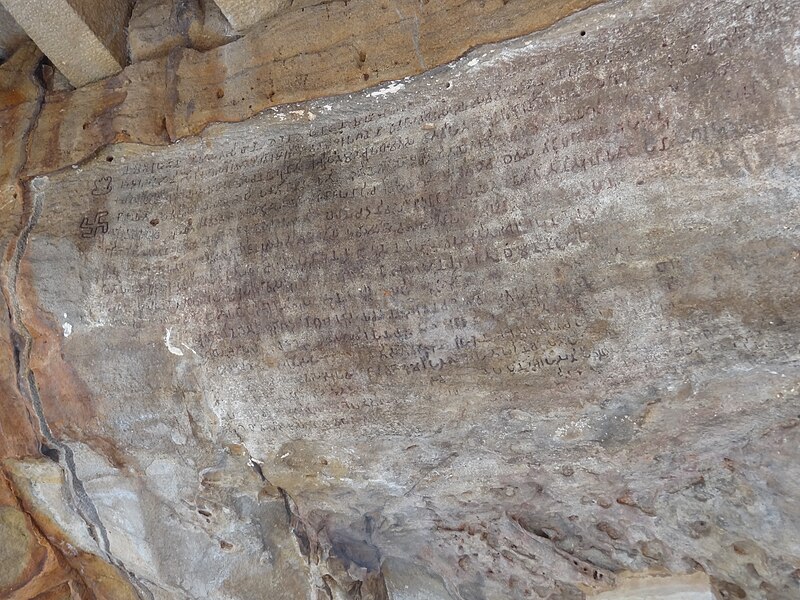

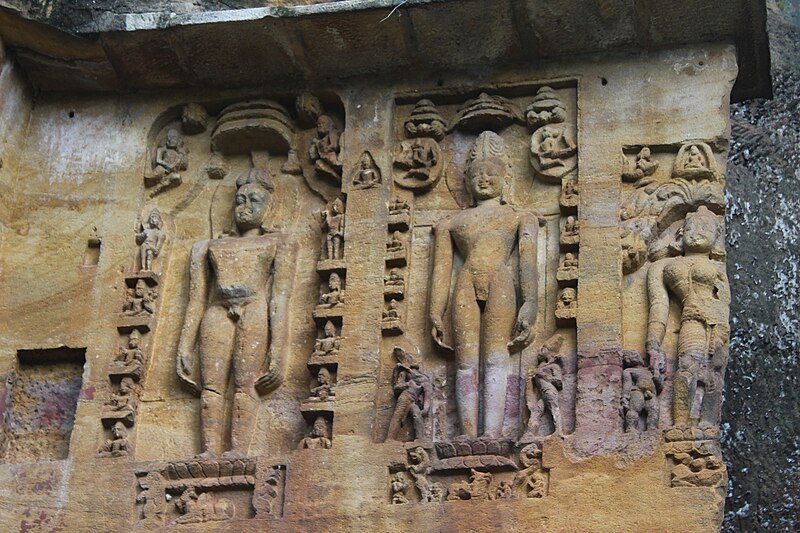
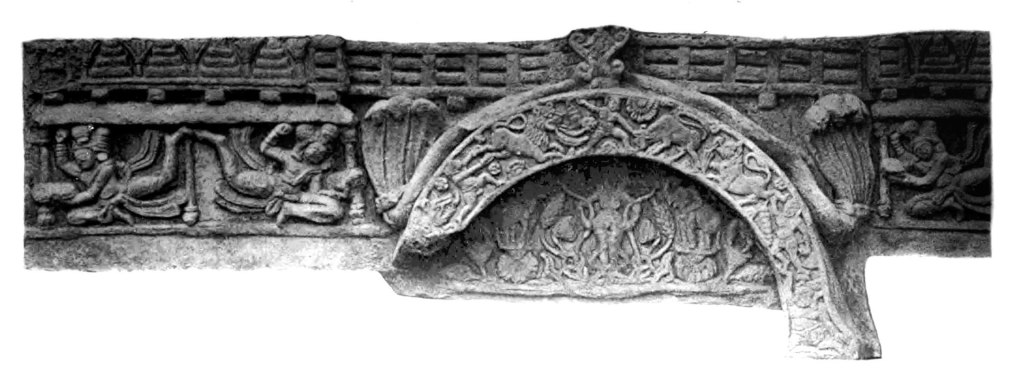
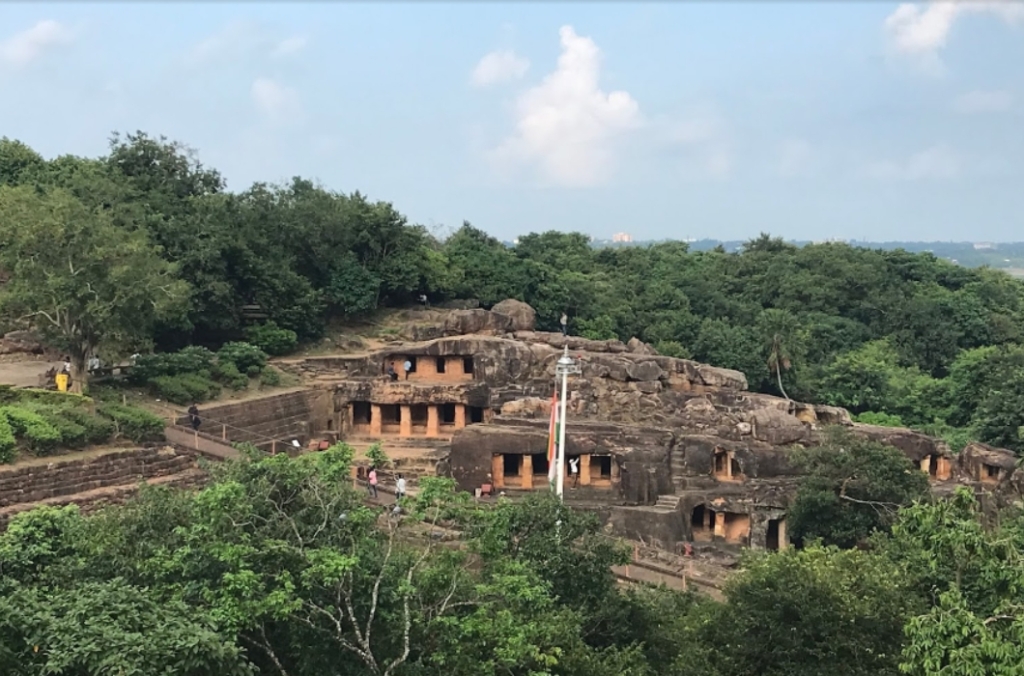
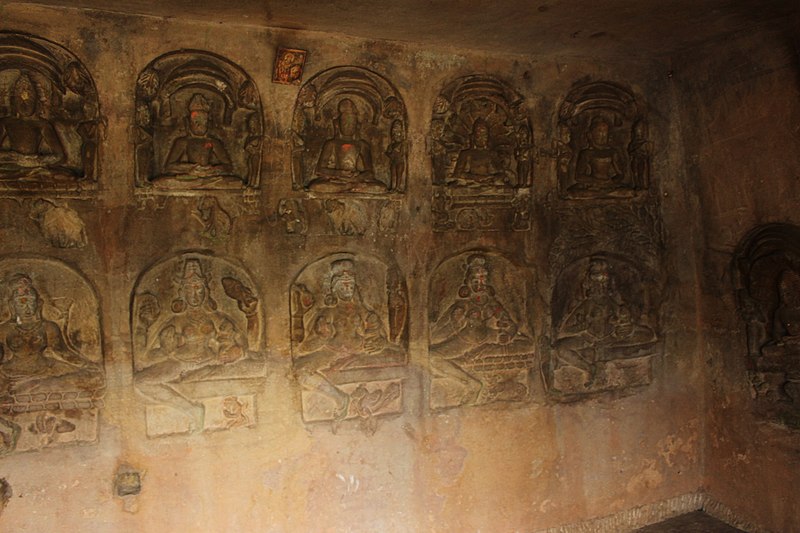
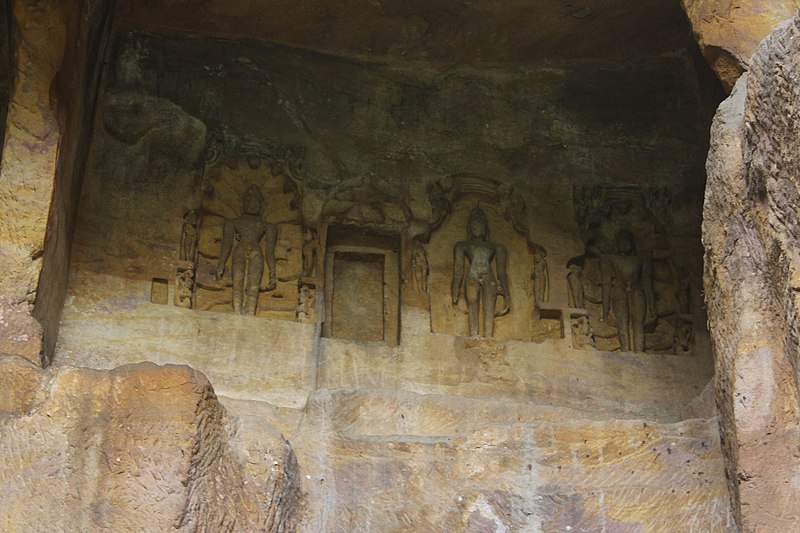
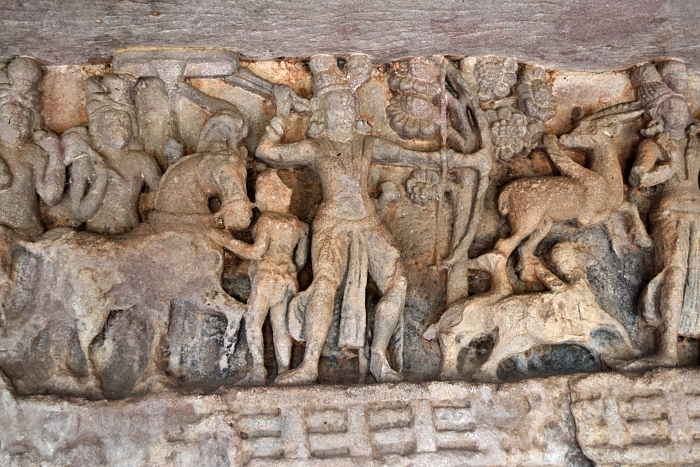
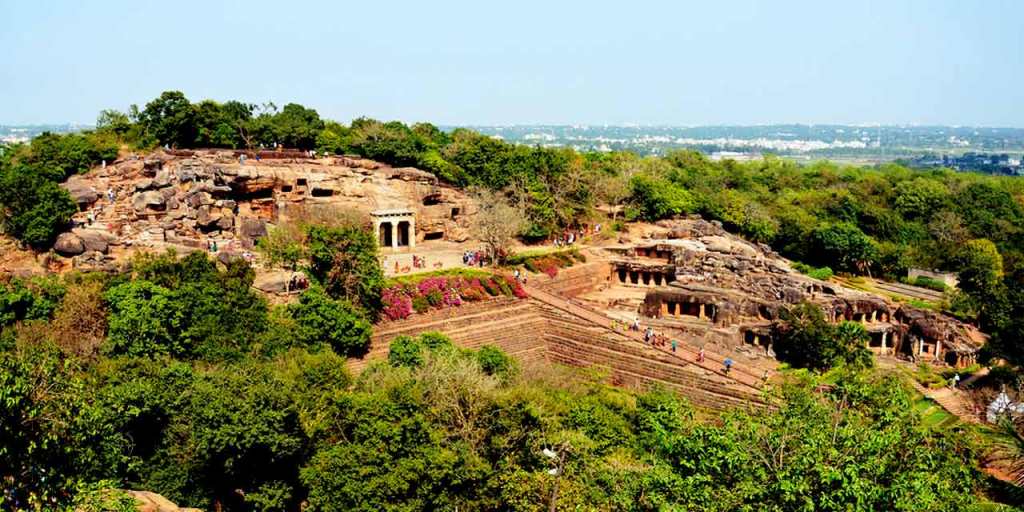
This proud sculptural and architectural wealth, coupled with its sanctity as Ekamra Kshetra, one of the five great religious centers in Odisha since early medieval days, attracts thousands of visitors to Bhubaneswar from all corners of the world throughout the year. Even the most casual spectator is thrilled at the sight of the majestic and sublime grandeur of its soaring temples, the perfect symphony between their sculpture and architecture, the superb workmanship of their carvings and the grand repertoire of their sculptural and architectural motifs. To the connoisseur of fine arts, Bhubaneswar is one the most delightful resorts in India. It is rare to find such a large number of ancient monuments at one place, such as at Ekamra Kshetra, Bhubaneswar. Dubbed as the “Temple City” – a nom-de-plume earned because of the 700 temples which once stood here, it still boasts of a cluster of magnificent temples, constituting virtually a complete record of Kalinga architecture almost from its nascence to its culmination with the Lingaraj Temple as its culmination that has been described as “one of the finest examples of purely Hindu temple in India” by noted architectural historian of 19th Century CE, James Ferugsson. Coupled with other urban components like water bodies, clear hierarchy of roads, city zoning et al, Ekamra Kshetra is an outstanding example of Hindu city planning based on the application of the Mandala concept, which in itself is a unique system of planning unparalleled in the world. With a radiant aura, all the monuments including Temples, Mathas, Fort, Caves, Tanks and other antiquarian remains have uncommon aesthetic importance in respect of their style of construction, state of preservation continuing for the posterity. Ekamra Kshetra is the synthesis of multi–religious systems namely Brahminical, Buddhist and Jain. Even Brahminical faith was proliferated into Saiva, Sakta and Vaisnava affiliations, and exhibits important developments in architecture, building technology, town planning etc. These temples are still functional and home to numerous intangible living traditions, rituals, festivals and other observances believed to be centuries old. The presence of the old system of Sevayats (Servitors) who are associated with the day to day temple rituals and their existing settlements around the temples is equally significant. The presence of such a large number of temples at one location with the culminating architectural marvel of Lingaraj Temple is a sheer case of human creative genius. Ekamra Kshetra exhibits an important interchange of human values throughout ancient and medieval periods at Bhubaneswar that is manifest in the development of Kalinga architecture so much so that the entire range of this style is evident within Ekamra Kshetra.

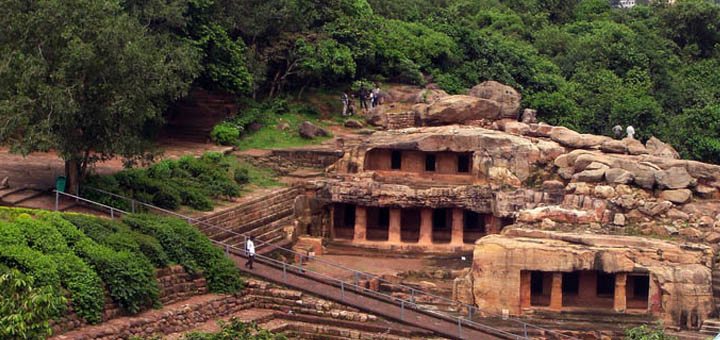
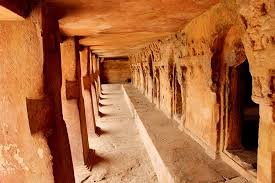
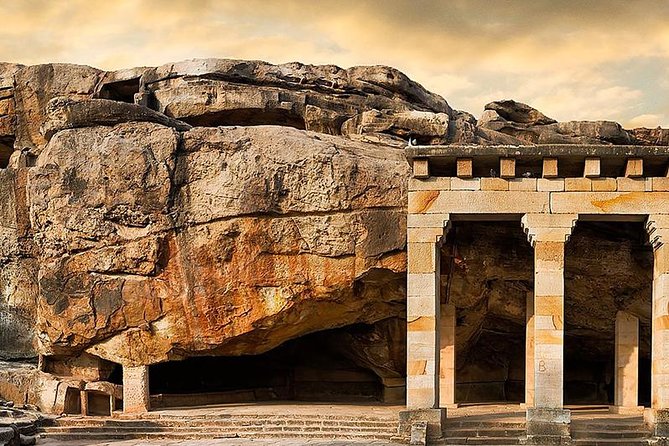

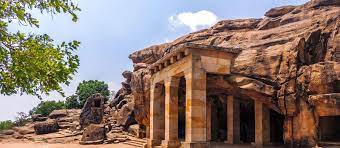
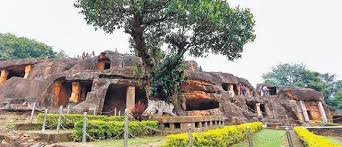
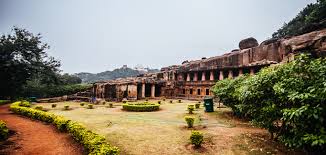
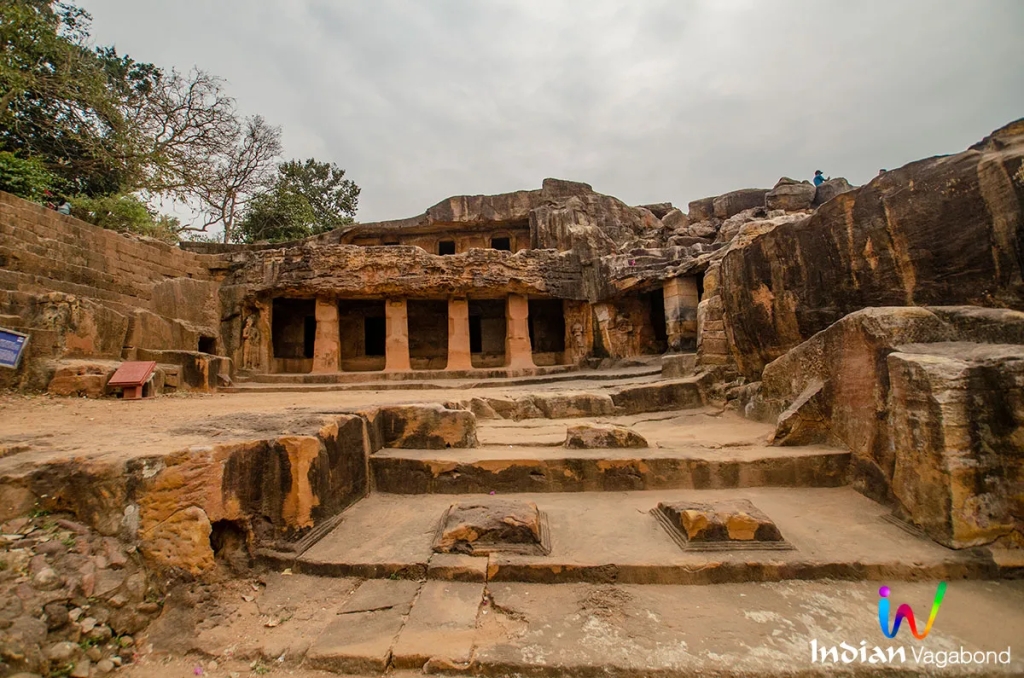
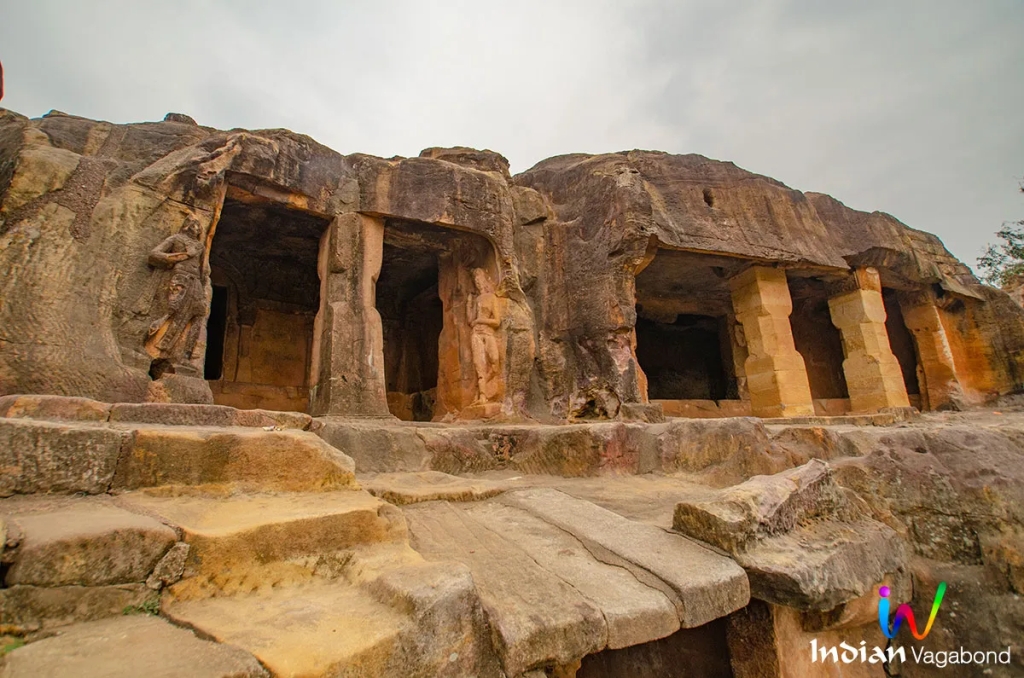
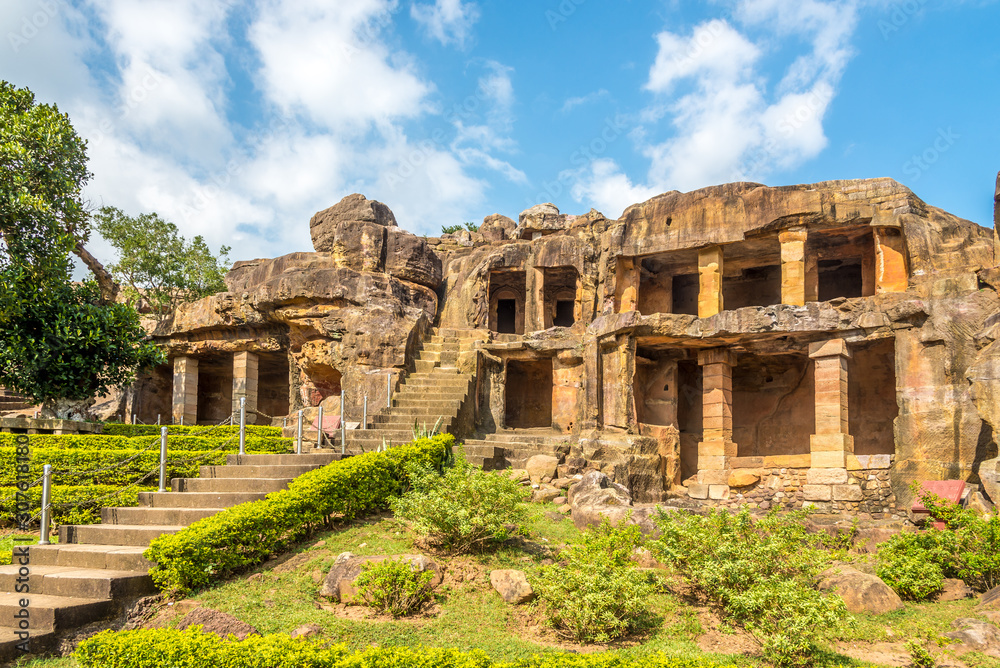
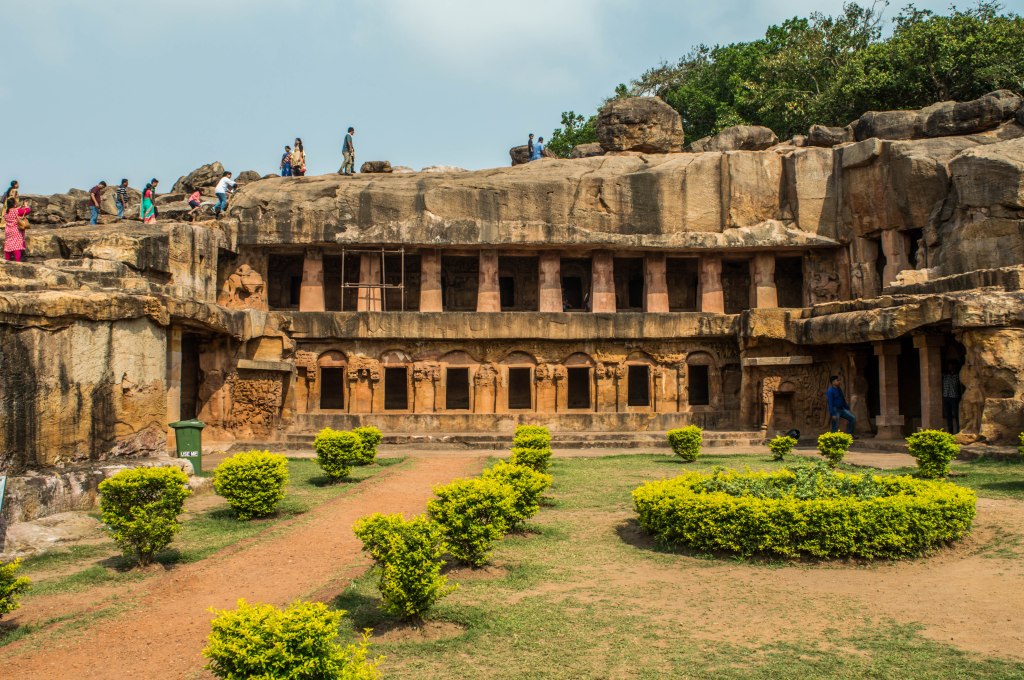
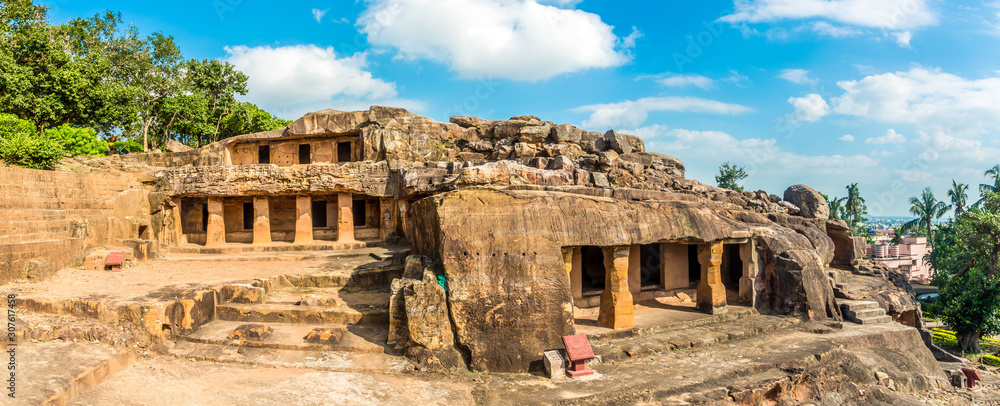
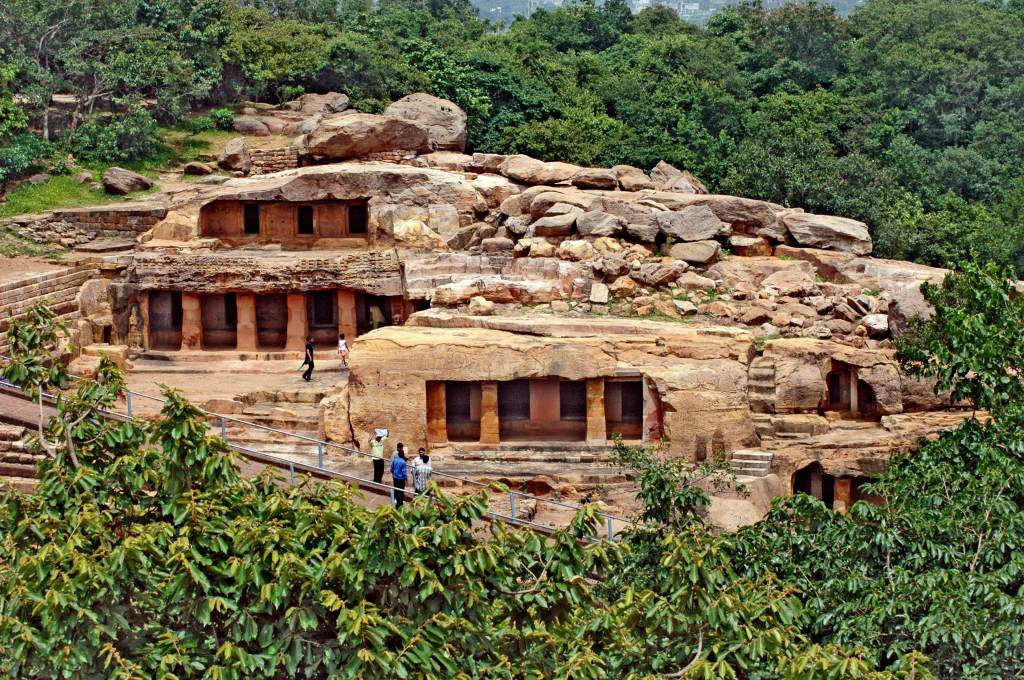


Ekamra Kshetra bears an exceptional testimony to the multi-religious, multi-sectoral holy city and associated traditions that are still living. The design and development of Ekamra Kshetra as a Hindu sacred city based upon the principles of Mandala are still evident. Since many of the monuments within the property are protected by law either by the national government or by the state government and the focus of these agencies is preservation of sites, it can be safely stated that the site maintains a good measure of Authenticity and Integrity. The entire site area comes under the jurisdiction of Bhubaneswar Municipal Corporation while the responsibility of the planning and development regulations is vested with the Bhubaneswar Development Corporation, both of which are aware of the significance of Ekamra Kshetra and are willing to work upon an appropriate framework for protection and management of the overall site. Ekamra Kshetra – The Temple City, Bhubaneswar was inscribed in the tentative list of World Heritage Sites in 2014. I’ve visited Bhubaneswar once and I guess I already mentioned about it on the blog when we visited Konark. There are many more monuments to cover in Ekamra Kshetra for which I don’t have much info to share which is why I’ve mentioned there are hopes of another return both in the blog as well as real life. I’ll rewind the moments from my previous tour to Odisha which will require quite some time as I have to go back more than 16 years.
Well, that’s all I have about the monuments. Now, coming to sports across the globe. New Zealand will tour Pakistan for a five match T20 international series which will start later this month. Pakistan have recalled Mohammad Amir and Imad Wasim for the series. Both the players have reversed their retirement decisions to play in the 2024 ICC T20 World Cup. Babar Azam will return as the captain of the team in white ball formats. Shadab Khan, who was dropped for the tour of New Zealand, was also recalled on the back of his performances in the Pakistan Super League. Naseem Shah also returns to the side after an injury lay-off. Fakhar Zaman was also retained while Azam Khan and Abrar Ahmed also keep their spots. Usman Khan, who played in the Pakistan Super League as an overseas player after moving to United Arab Emirates for pursuing his career, also finds a spot in the squad after reversing his decision and expressing interest to play for Pakistan. Irfan Khan, who was named the Emerging Player of the Pakistan Super League also received a maiden call-up. Michael Bracewell will lead New Zealand in the series with nine players unavailable due to the ongoing Indian Premier League. Will Young will also miss the tournament due to county commitments while Tom Latham has made himself unavailable due to family commitments. Tim Southee has been given an extended period of conditioning and Colin Munro also made himself unavailable despite being considered. Bracewell returns to the squad after an injury lay-off due to which he missed the World Cup. Tim Robinson received a maiden call-up to the squad on the back of his strong performances in the Super Smash while Will O’Rourke who made his test and one day international debuts is set to make his T20 international debut. Finn Allen and Mark Chapman along with Robinson will boost the batting line-up. Bracewell along with Josh Clarkson, Dean Foxcroft, Cole McConchie and Jimmy Neesham are the all-rounders in the squad. Jacob Duffy, Ben Lister, Adam Milne, Ben Sears and O’Rourke are the pacers in the squad with Ish Sodhi the sole spinner named. Bracewell, Foxcroft and McConchie can complement as additional spinners while Clarkson and Neesham will add extra pace. Tim Seifert is the desigated wicketkeeper in the squad. Now, let us have a look at the remaining squads of the Indian Premier League. Punjab Kings signed Harshal Patel, Ashutosh Sharma, Vishwanath Singh, Shashank Singh, Tanay Thyagarajan and Prince Choudhary. Chris Woakes and Rilee Rossouw were the overseas players bought. Delhi Capitals signed Ricky Bhui, Kumar Kushagra, Rasikh Salam, Swastik Chhikara and Sumit Kumar. Harry Brook was also bought by the Capitals and was the first player to be sold in the auction. Shai Hope also made his IPL debut with the Capitals. Jhye Richardson and Tristan Stubbs were the other players to be bought in the auction. Brook later made himself unavailable due to personal reasons and has been replaced by Lizaad Williams. Lungi Ngidi will also miss the tournament due to injury and has been replaced by Jake Fraser-McGurk. Sunrisers Hyderabad signed Jaydev Unadkat, Akash Singh and Jhathavedh Subramanyan in the auction. Travis Head will make his IPL return with the Sunrisers. Pat Cummins was also bought for INR 20.50 crore which was the highest price for any player in the auction only to be broken by Mitchell Starc who was signed for INR 24.75 crore by Kolkata Knight Riders few hours later on the auction day. Wanindu Hasaranga was the third overseas player to be signed by the Sunrisers but will miss the tournament due to injury and has been replaced by Vijayakanth Viyaskanth. With the IPL squads complete, we’ll look into the team line-ups for the Major League Cricket and the Hundred from our next post.
Well, that’s all I have for the day. Thus, we have concluded our tour of the Ekamra Kshetra but as I mentioned there are still hopes of a return to Bhubaneswar if I get more information to share with you. With the Ekamra Kshetra tour complete, I’ll be in a dilemma for the next few days thinking about which place to cover in our next post. Whether the next post will have more than one part or whether it will be an exclusive post about any monument or group of monuments remains a suspense for even me. There are many places which can be considered and it is hard to make a choice from the wide array. Coming back to my narrative of my most recent tour, we stopped at Badami in the previous post. Next day morning or maybe I should say noon, when I started my journey for the day, I boarded the bus to Aminagad and took the ticket to Aihole which costs INR 33. To much disappointment, the wheel got punctured few kilometers before Pattadakal and I had to get down on the way waiting for the next bus. The next bus came few minutes later but was going to Gudur, which was in a different direction from where I had to go. A passenger who was in the bus told me to get down at Katarpur Cross and wait for the next bus coming from Badami to go towards Aminagad which will take atleast another hour. I decided to get down at Pattadakal and cover the monuments during the time. I believe I don’t have to rewind what happened after that as I told the story of missing the bus due to getting fascinated by the marvelous architecture of the monuments. After completing the tour of the complex, I walked back to the bus stop waiting for the next bus. This time also I didn’t visit the Jain Temple as it is situated bit away from the main group and it was really hard to walk in the humid weather. I visited the Jain Temple only once and that too, I just saw it from outside as there wasn’t anyone around. The Jain Temple is also part of the World Heritage Site Group of Monuments at Pattadakal but lacks visitors due to its location away from the main group. The people in the locale also told me once that there is nothing much interesting about the Jain Temple as it is a single monument located away from the main group. I asked the shopkeeper when the next bus to Aihole will come and he replied that it’ll take another two hours as it was Sunday and very less buses run on the route on weekends. After few minutes, the bus to Badami came and I had to leave without visiting Aihole. Except in the first journey to the region, I visited Aihole on all other occasions and it was disappointing for me to leave without exploring Aihole again. Upon returning to Badami, I took rest in my room for a while and then went on to visit the Badami Caves and Fort. Unfortunately, the entry time for the caves and fort has elapsed when I reached and I had to click pictures from outside of the two monuments. As the sky was sunny, I walked around the lake and visited the Bhutanatha group of temples and clicked many pictures of the monuments and returned to the room. After the night’s sleep, I woke up early in the morning to kickstart my final leg of the tour. That is yet another long story to tell which I’ll share in the next post. Once again, thank you for your valuable feedback and support you’ve given to the blog and our YouTube channel is active again and you can expect more videos in the upcoming days. Requesting you all to stay safe and make the use of sanitisers and masks a must in your daily life whenever relevant and also get vaccinated with two doses in case you haven’t. For now, keep calm and explore the marvelous architecture of the Ekamra Kshetra.
